In 2025, SEO conversations focused on two very impactful trends:
- The prevalence of AI Overviews and how they led to less site traffic
- The changing ways people search with the rise of LLMs
We experienced perhaps the biggest upheaval since the beginning of search.
But as usual, SEOs persevered, knowing that the skills we possess to create value and reach our target audiences online would remain invaluable, even if some of the finer points changed.
So, whether you’re new to SEO or trying to pivot your strategy, we’re going to walk through the step-by-step process to creating a SEO strategy that works now.
In this guide, you’ll learn how to:
- Set SEO goals that drive real business results
- Find topic opportunities across platforms
- Create content that gets ranked, featured, and cited
- Build visibility for search engines and AI tools
- Keep your strategy working as things change
Want a strategy tailored to your business? We built a free AI prompt that turns this guide into a custom plan for your specific situation. Just plug in your business details and get personalized next steps.
1. Define Your SEO Goals
Before you research a single keyword or write a line of content, you need to know what success looks like for your business.
The biggest mistake I see SEOs make is chasing rankings and traffic instead of revenue.
What matters is if SEO drives qualified leads, reduces customer acquisition costs, or increases brand awareness in your target market.
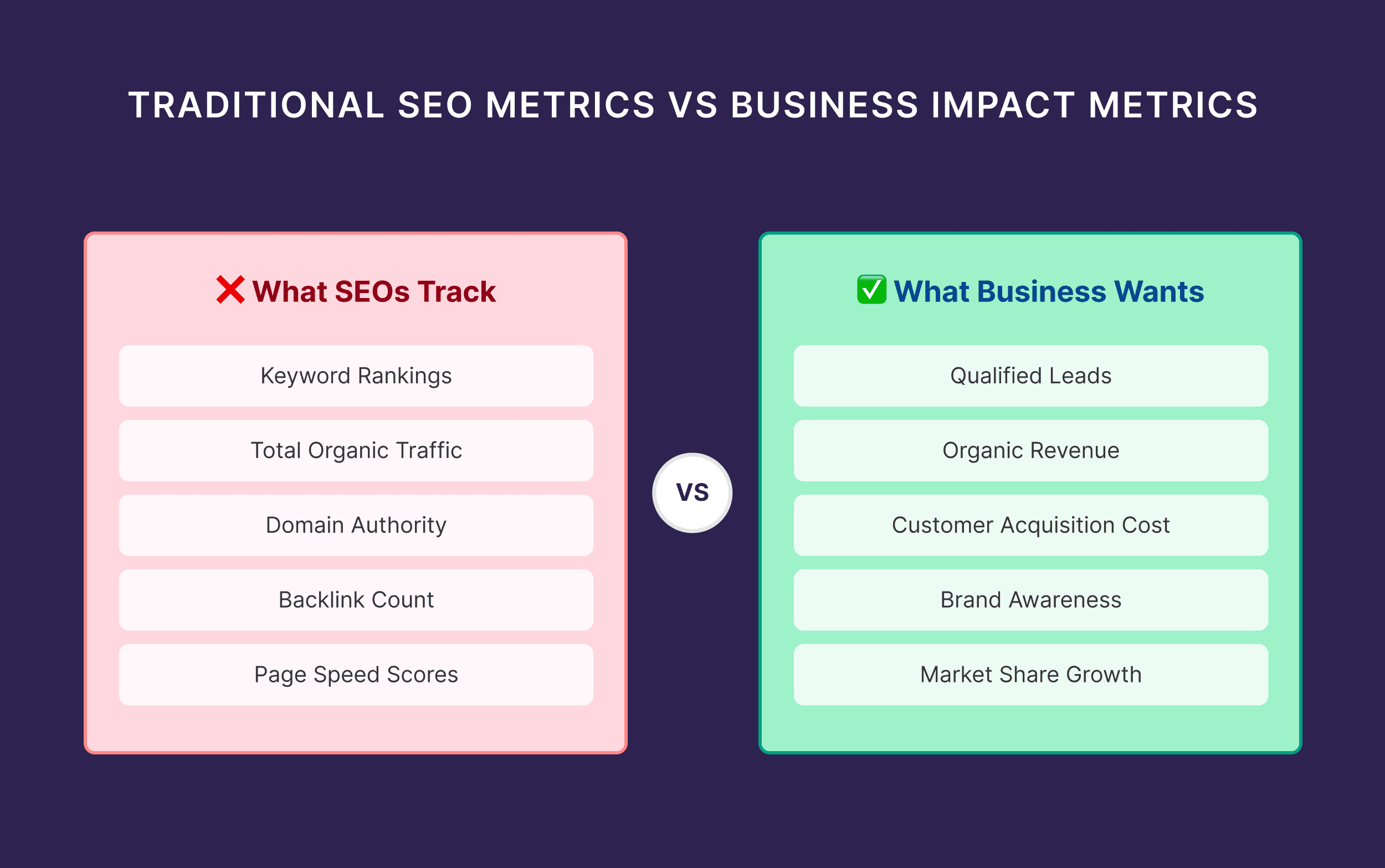
This disconnect is why you may struggle to prove ROI and secure adequate budgets. You’re optimizing for metrics that don’t directly translate to business value.
Here’s how to fix it.
Start With Business Outcomes, Not SEO Metrics
Ask yourself: What would make SEO a clear win for your business this year?
Your answer might be:
- Local restaurant: 50 new customers per month from “best Italian food [city]” searches
- Affiliate business: $10K monthly revenue from product comparison content
- SaaS startup: 200 qualified demo requests from bottom-funnel keywords
- E-commerce brand: 30% increase in organic revenue from product pages
None of these are “rank #1 for keyword X.”
These are business outcomes that matter, and they give you a framework for everything else you’ll do.
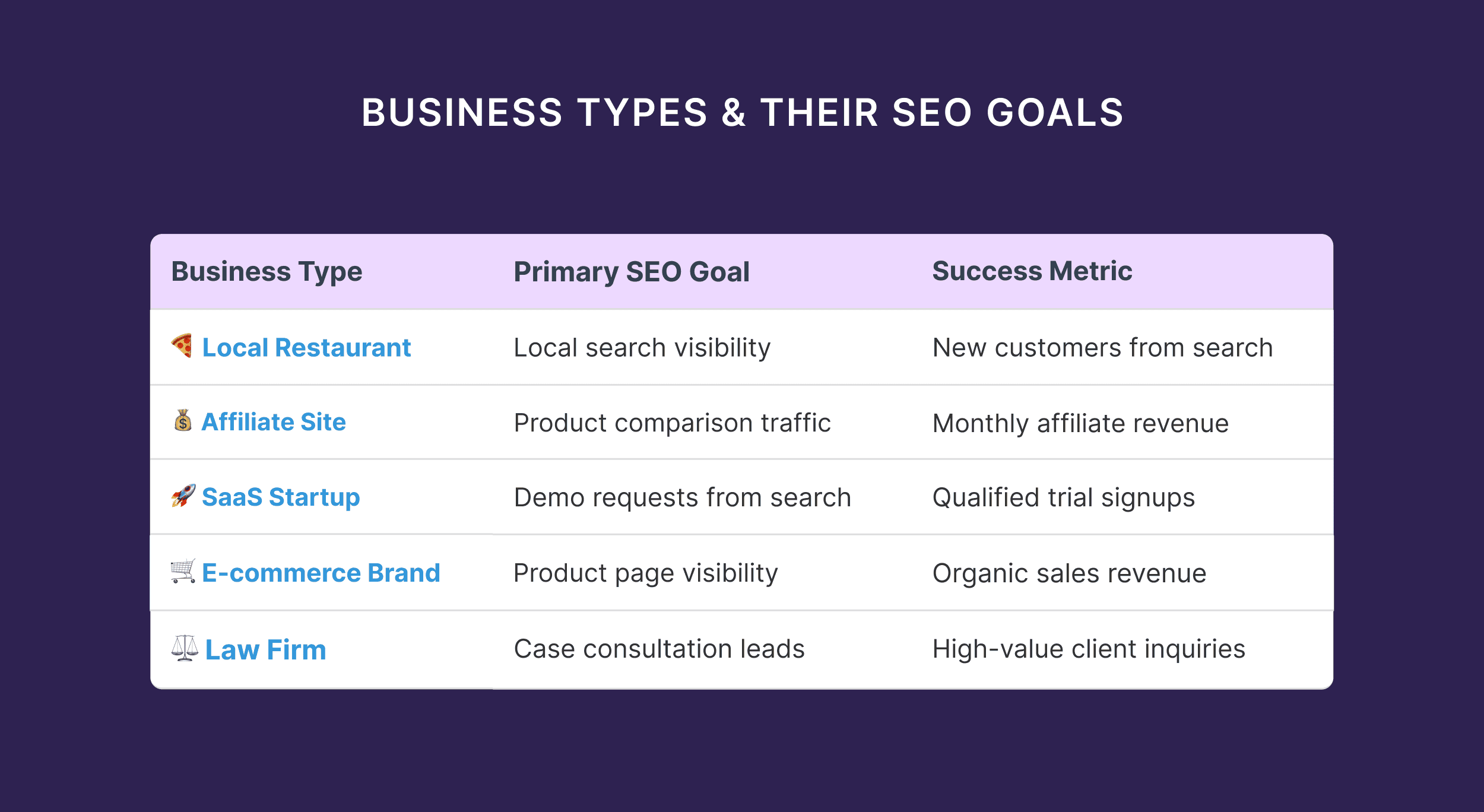
Map Goals to SEO Focus Areas
Once you know your business goals, you can identify the most impactful SEO activities.
Lead generation business (consulting, SaaS, services):
- Primary focus: Bottom-funnel commercial keywords
- Content priority: Problem-solution content, case studies, comparison pages
- Success metrics: Qualified leads, conversion rates, cost per acquisition
Revenue-focused business (e-commerce, affiliate):
- Primary focus: Product and money keywords
- Content priority: Product guides, reviews, buying intent content
- Success metrics: Organic revenue, transaction value, product page traffic
Local business (restaurant, dental, home services):
- Primary focus: Local search visibility and reviews
- Content priority: Local content, service pages, location-specific guides
- Success metrics: Store visits, local leads, brand searches in your area
Track What You Can Measure (And Acknowledge What You Can’t)
Tracking the true business impact of SEO has become harder, not easier.
Users bounce between ChatGPT, Google, Reddit, and YouTube before converting.
AI tools don’t pass referral data.
Privacy changes reduce tracking accuracy.
And zero-click searches mean engagement happens without site visits.
So instead of chasing perfect attribution, focus on directional trends and leading indicators.
Track these reliably:
- Brand search volume trends (shows growing awareness)
- Direct traffic increases (often indicates SEO influence)
- Share of voice vs competitors on search and LLMs in your key topics
- Organic traffic to high-converting pages
- Customer lifetime value trends
Use qualitative data:
- Survey customers: “How did you first hear about us?”
- Track mentions in industry discussions and forums
- Monitor assisted conversions in Analytics (longer attribution windows)
Skip the vanity metrics:
- Total keyword rankings (focus on commercial intent keywords instead)
- Domain authority scores
- Traffic to blog posts that don’t convert
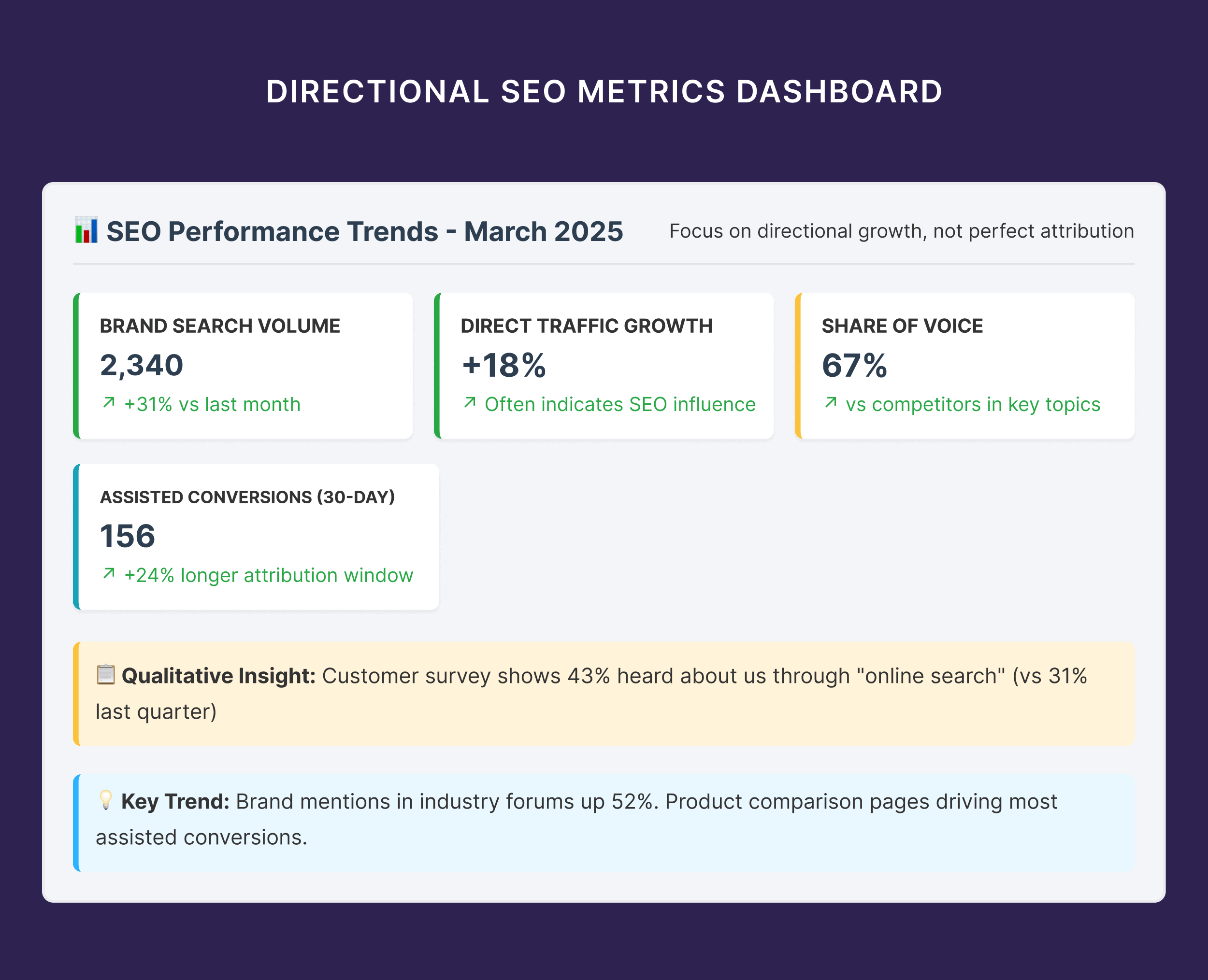
2. Research Topics Across Platforms
A single topic is the starting point for much deeper exploration.
People use natural language, ask questions across multiple platforms, and expect answers that go beyond a simple list of links.
It starts with what you already know about your customers.
Further reading: Audience Research: Stop Guessing What Your Buyers Care About
Collect Your Customer/Audience Data
Before you open a single keyword tool, you have access to intelligence that your competitors don’t: direct customer insights.
Here are some examples:
| Business Type | Customer Intelligence Sources | Example Keywords/Topics |
|---|---|---|
| Ecommerce | Product reviews, support tickets, return reasons | “Why does X break after Y months?”, “X vs Y comparison” |
| Local Business | Walk-in questions, phone inquiries, seasonal patterns | “Best X near me”, “X open on Sunday”, “Emergency X service” |
| SaaS/Software | Sales calls, demo questions, cancellation feedback | “X integration with Y”, “How to migrate from X to Y” |
| Content Creator | Comments, DMs, audience polls | “Behind the scenes X”, “X tutorial for beginners” |
| Consultant/Agency | Client briefs, proposal requests, discovery calls | “How to choose X consultant”, “X pricing guide”, “DIY vs hiring X” |
| Restaurant/Food | Diner questions, dietary requests, event inquiries | “X catering options”, “Gluten-free X menu”, “X private dining” |
| Health/Fitness | Client goals, transformation stories, FAQ patterns | “X workout for Y goal”, “X meal prep ideas”, “X results timeline” |
| Home Services | Service calls, neighbor referrals, seasonal demand | “Emergency X repair”, “X maintenance schedule”, “Best time for X” |
Note the language your customers use when they describe problems, ask questions, or explain their goals.
This gives you topics that search tools miss, and language that actually converts.
Steal Keywords From Your Competitors
Your competitors have already done the hard work of finding topics that drive business results.
Spend 30 minutes finding your competitors’ highest-traffic pages and the commercial intent behind them.
This single activity alone often reveals 3-6 months of high-impact content opportunities.
Here’s how to find your competitors’ money-making content using Semrush.
First, identify your true SEO competitors. Open Semrush and enter your domain in the “Domain Overview” section.
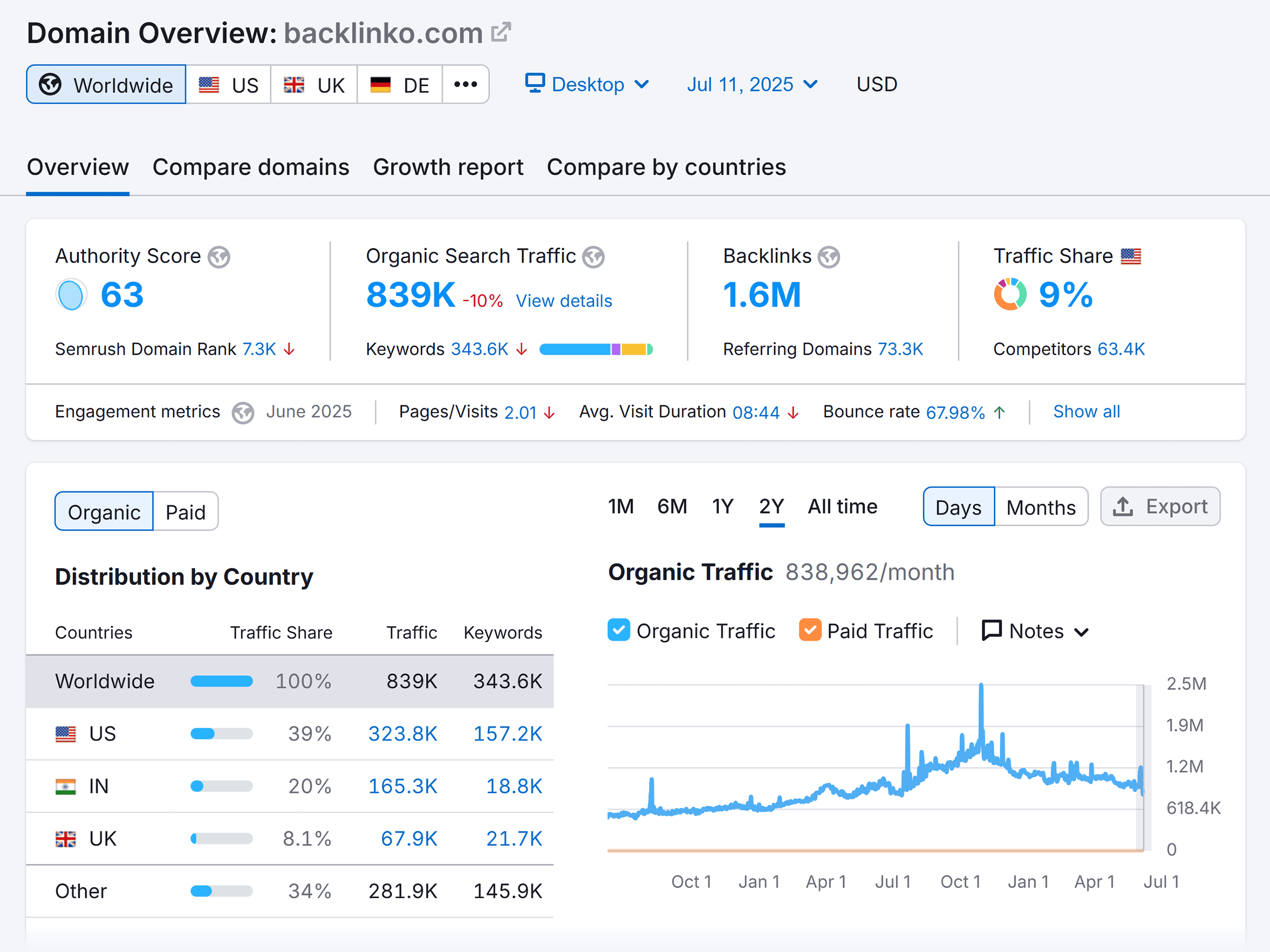
Scroll down to the “Main Organic Competitors” section to see who’s competing for your target keywords.
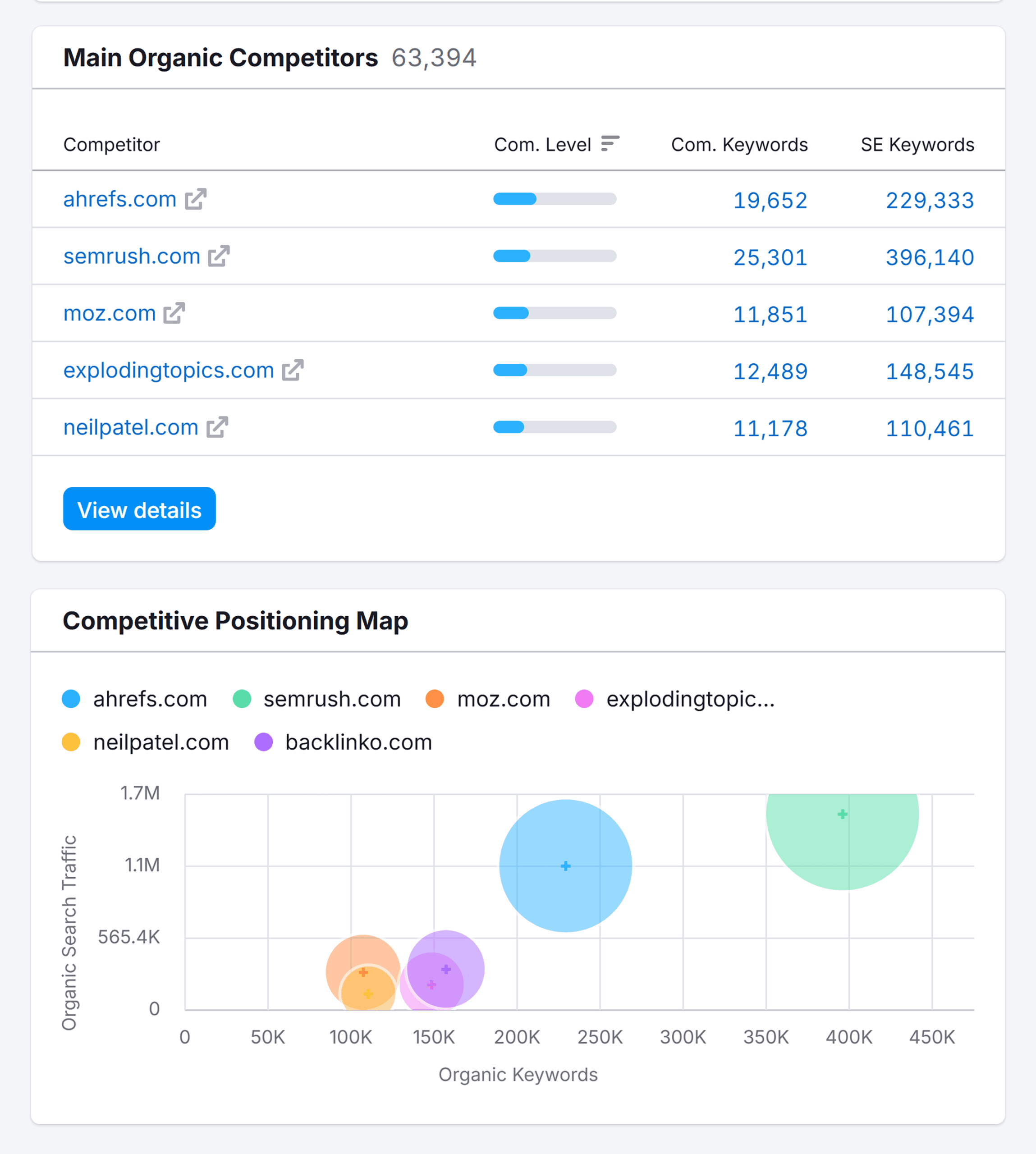
Now, instead of jumping straight to keywords, you want to see which of their pages are actually driving the most traffic.
Click on one of these competitors and navigate to “Organic Research,” then click the “Pages” tab.
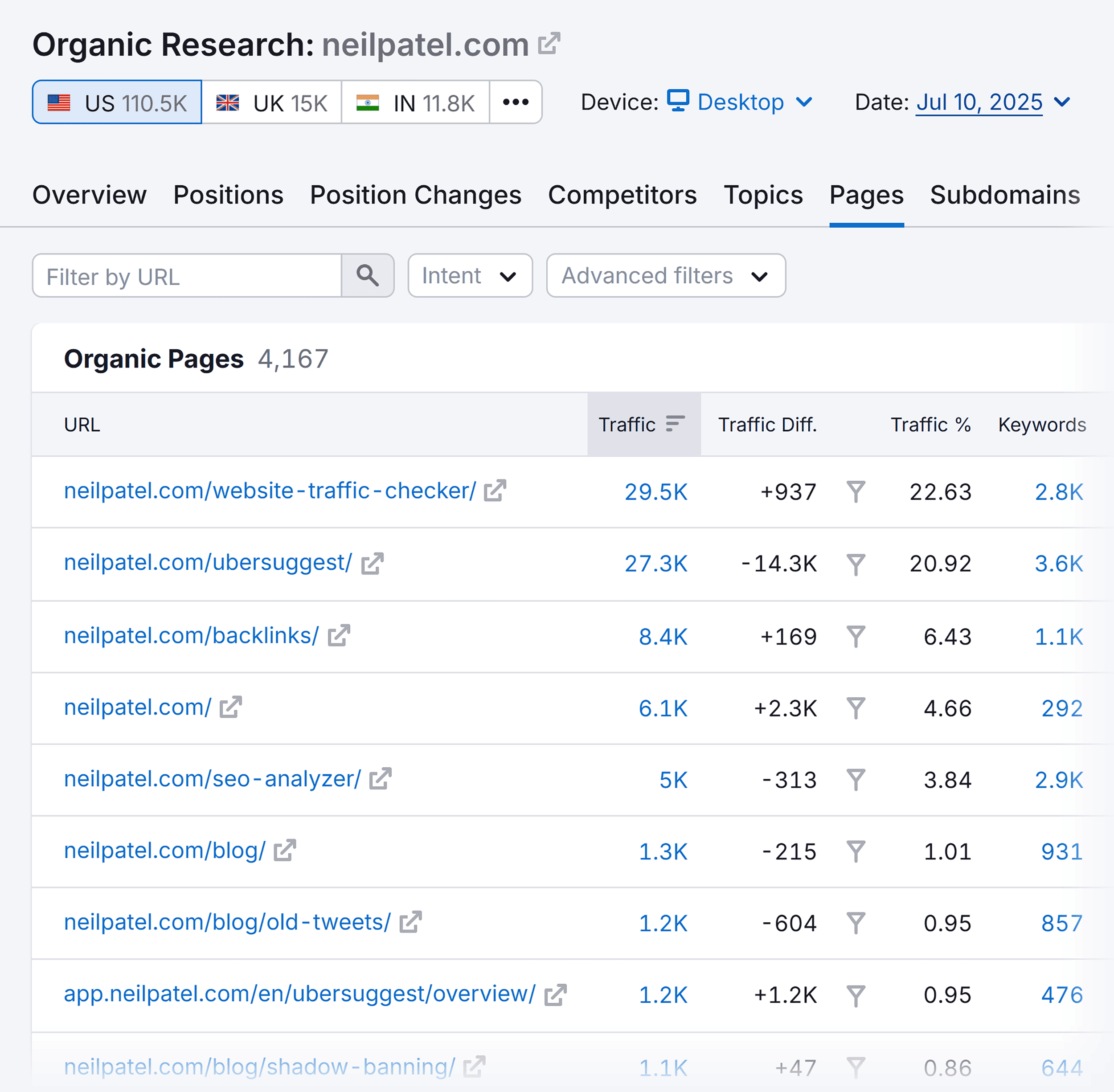
This shows you their highest-performing pages sorted by estimated traffic.
Focus on pages that drive business results, not just blog traffic. Look for:
- Product and service pages
- Category and collection pages
- Comparison pages (“X vs Y”)
- Listicle pages (“Best X for Y”)
- Pricing and review pages
- How-to guides with clear commercial angles
When you find a high-traffic commercial page, click into it to see all the keywords it ranks for. This reveals the entire keyword cluster behind that page’s success.
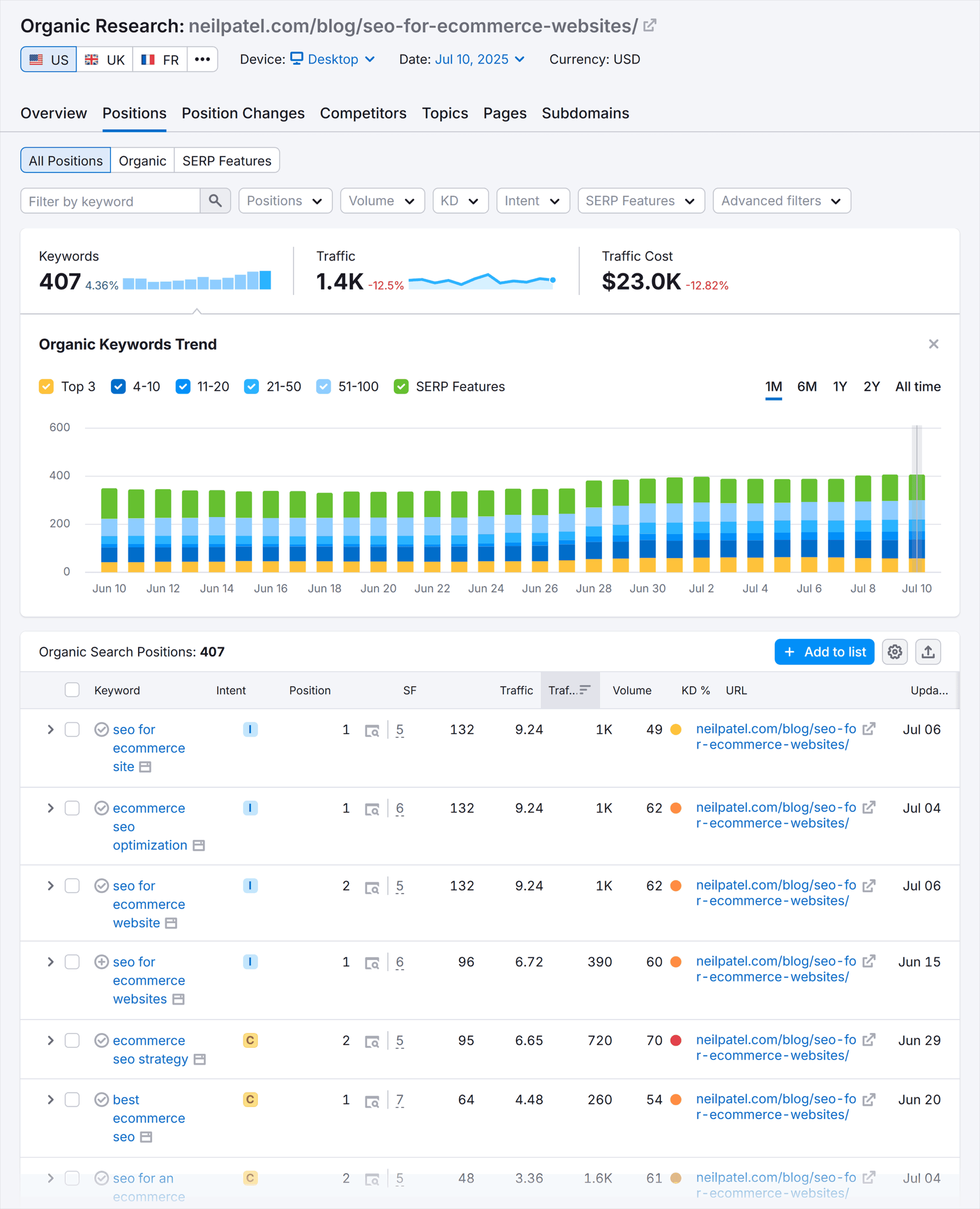
Validate and Expand Across Platforms
Now that you have strategic direction from customer insights and competitor intelligence, it’s time to validate and expand these topics across search platforms.
Use Google
Google Autocomplete is one of the easiest ways to find and validate keywords.
Just start typing a topic into the search bar, and Google will auto-complete the query based on what people are actually searching.
For example, if you enter “ai tools for,” you might see the following:
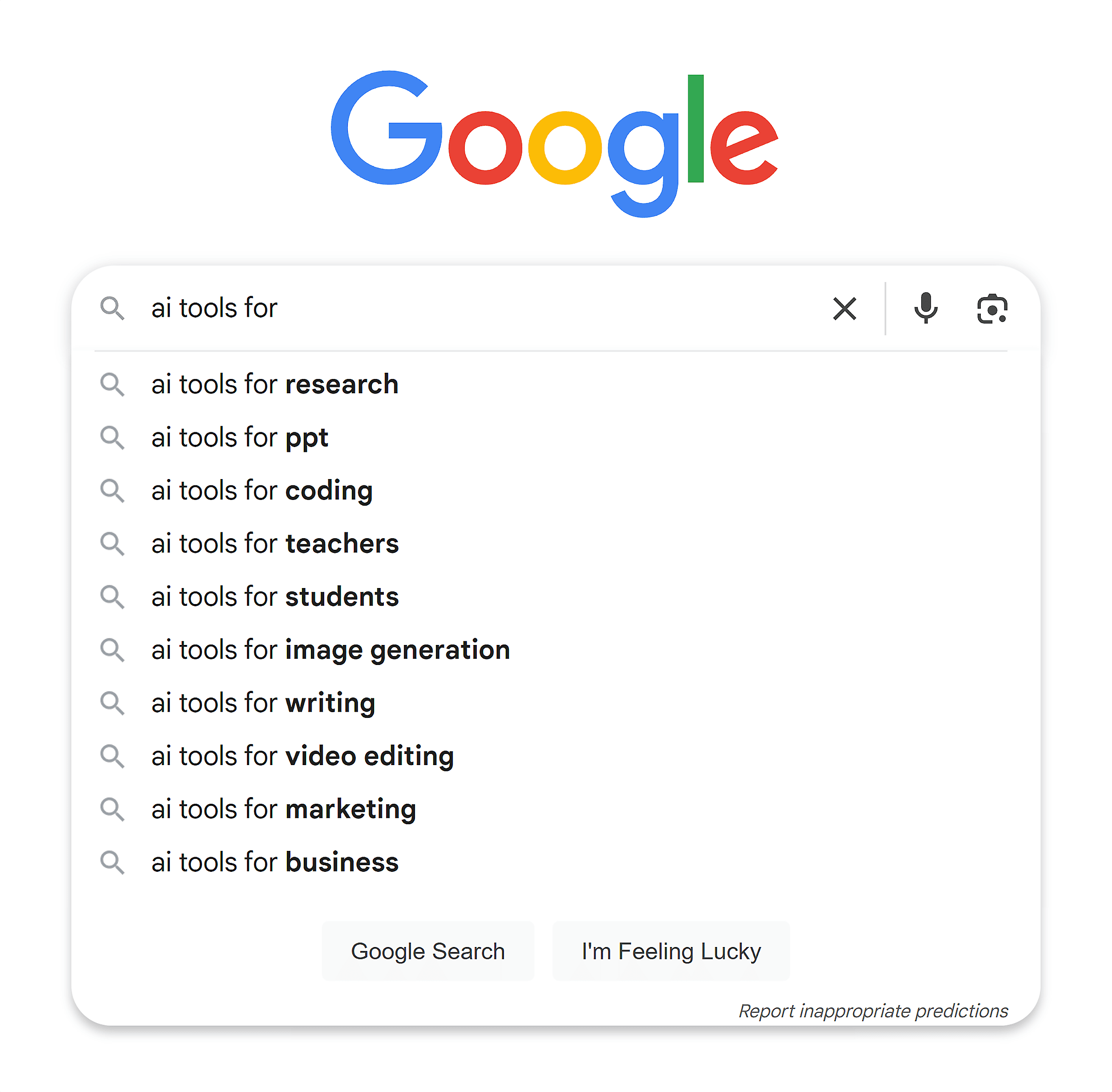
These phrases are longer and more specific than the original query.
These suggestions come straight from Google’s data — which means people are actively searching for them.
And because they’re usually longer and more specific, they tend to be less competitive and easier to rank for.
These are called long-tail keywords.

Each of these could be a page, blog post, or a sub-section within a larger guide.
Ask AI
People search with more context, natural language, and specificity. As we interact more with generative AI, this trend will keep growing.
Instead of just targeting isolated phrases like “seo tools,” try testing how ChatGPT handles questions about your topic.
For example:
“I sell colorful organic socks online, and I want more organic search traffic. What SEO tools should I be considering?”
Response:
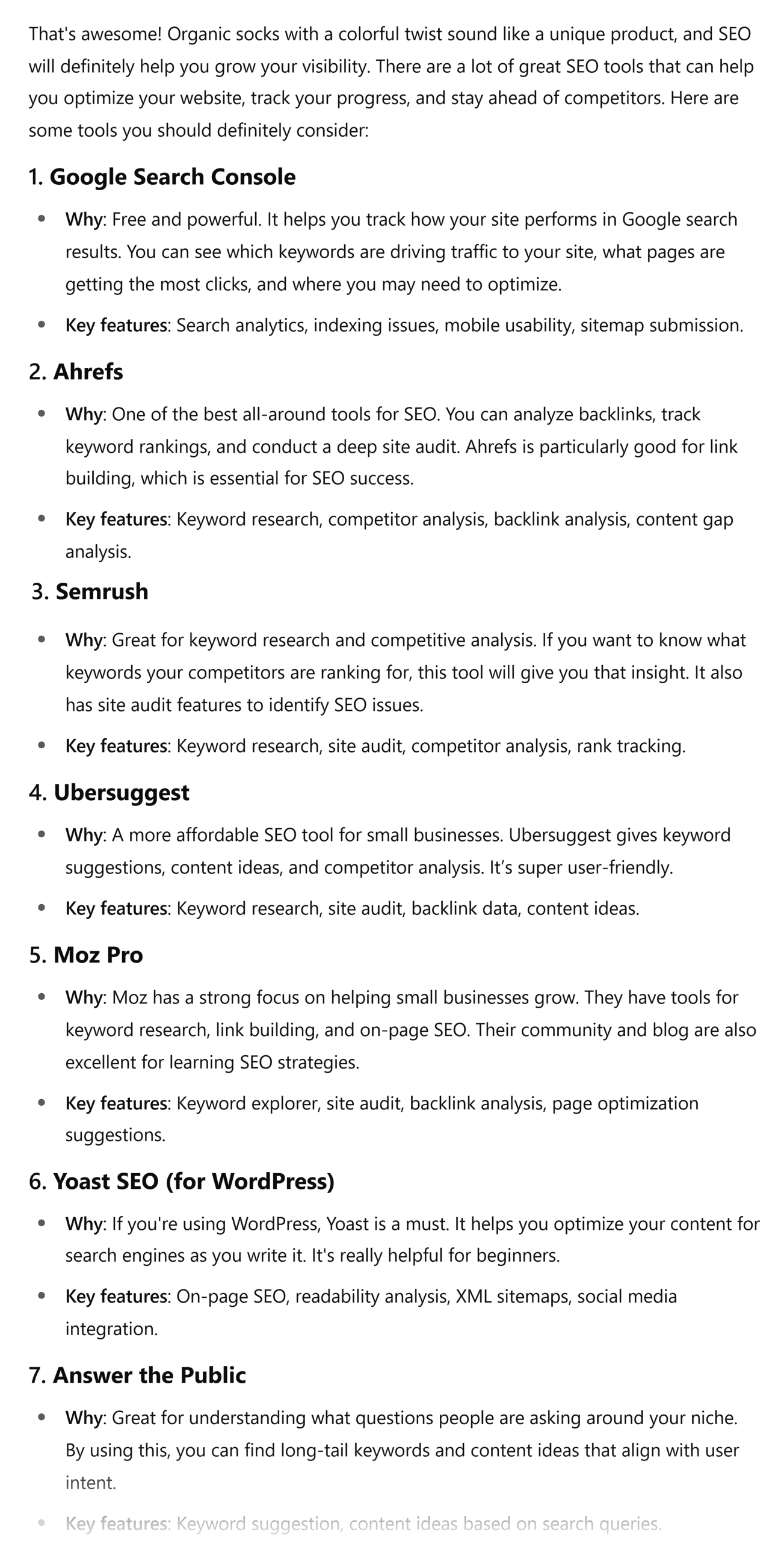
This approach reveals keyword opportunities you might miss in traditional research:
- Question patterns: AI responses show you how people naturally phrase problems
- Topic categorization: See how AI organizes and prioritizes information within your subject area
- Intent variations: The same core topic gets different treatment based on how you frame the question
- Conversational keywords: AI interactions reveal the natural language people use when discussing your topic
You can also use something like Semrush’s Prompt Research tool. This will allow you to see if you’ve missed any other longtail queries and their intents.
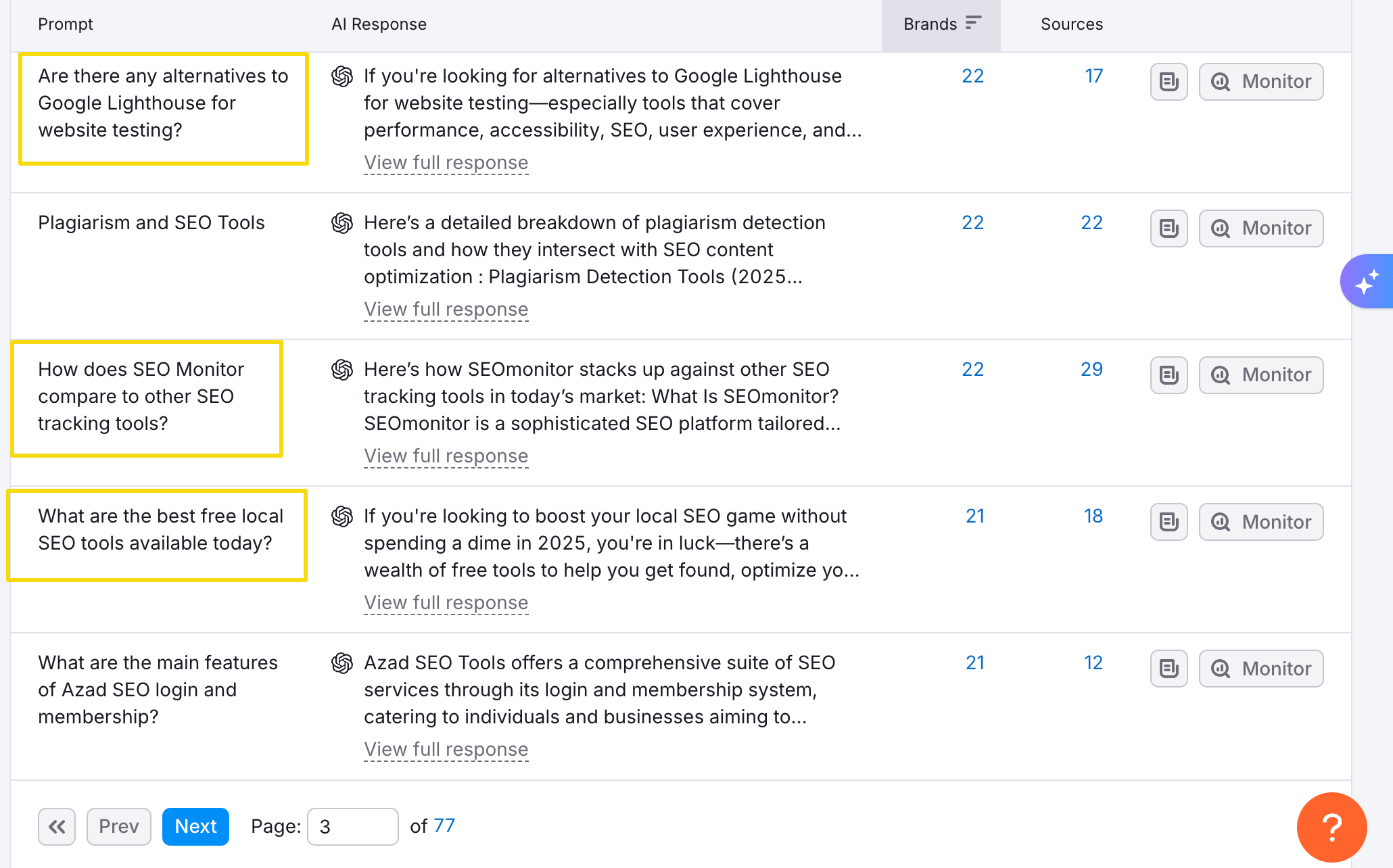
When I searched “SEO tools,” I saw trends in ChatGPT prompts, particularly around wanting help with vetting and asking for specific comparisons.
Check YouTube
YouTube is the second-largest search engine in the world. And people search differently there than they do on Google.
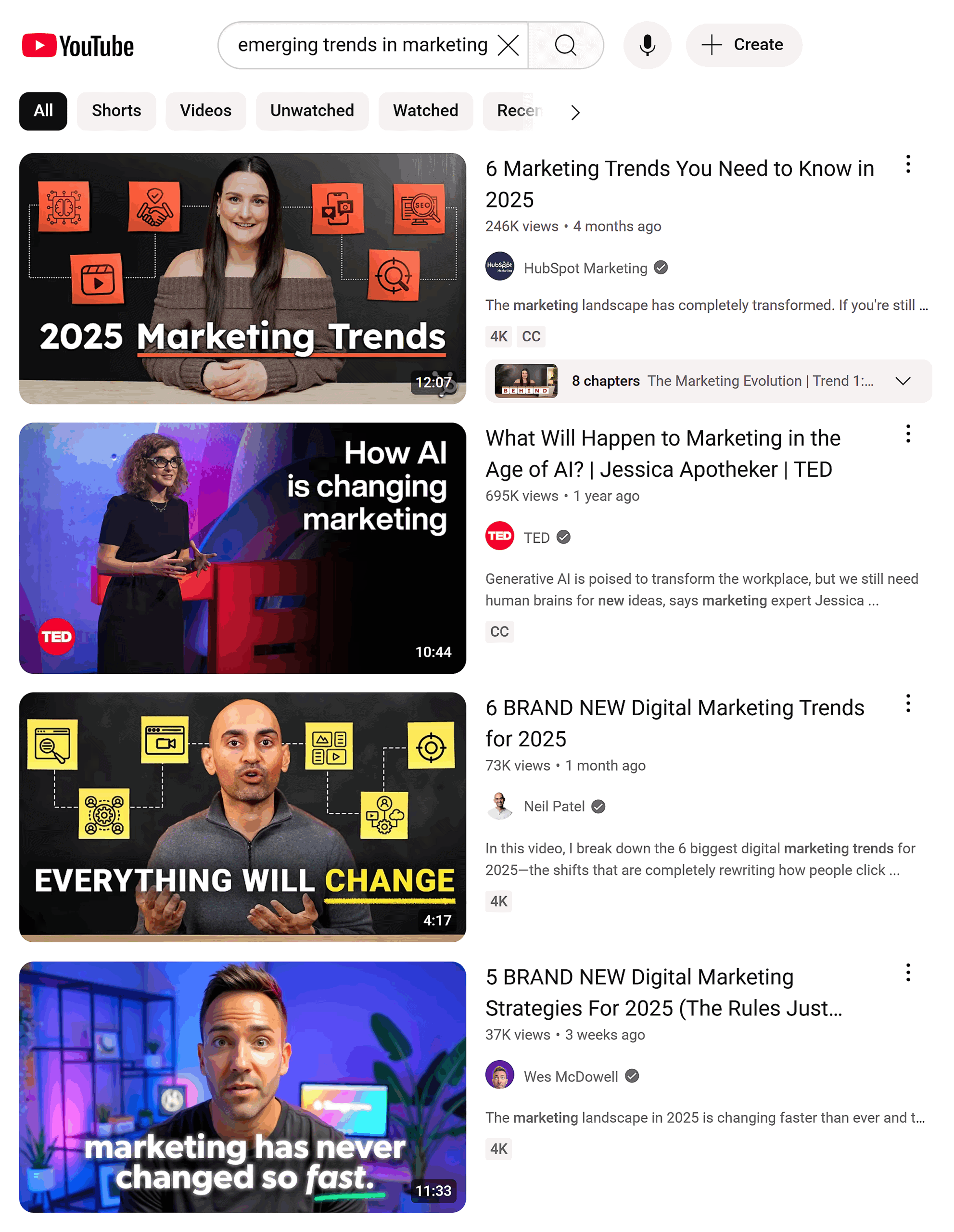
Look at:
- Search suggestions
- Top-performing videos (check views and engagement)
- Questions in the comments
Explore Reddit
Reddit discussions often reveal questions and problems that don’t show up in traditional keyword research.
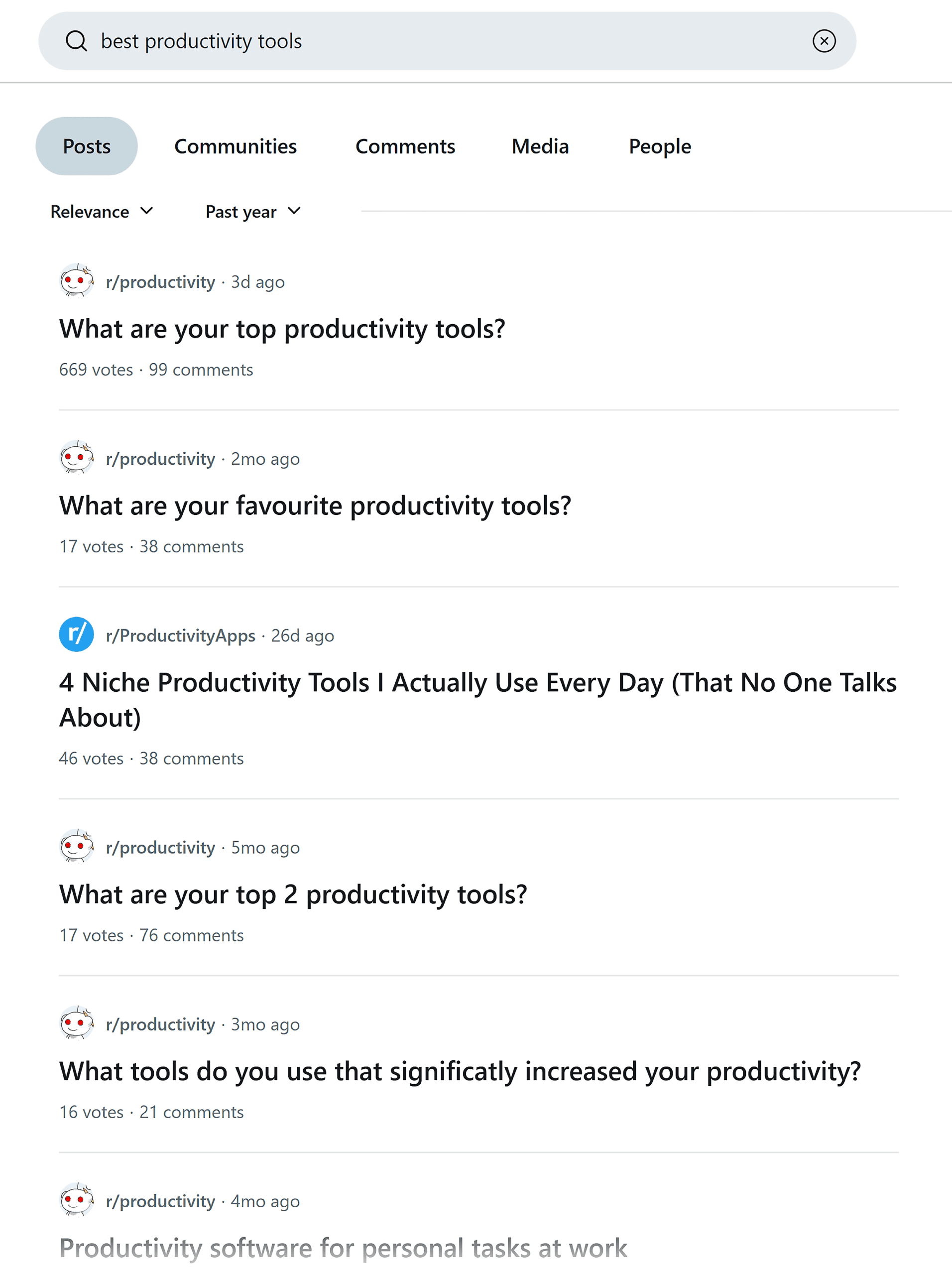
Browse relevant subreddits, and pay attention to:
- Common questions that get high engagement
- Pain points people mention frequently
- Tools or solutions that get recommended repeatedly
This is part of Search Everywhere Optimization — understanding how searchers explore a topic across different platforms.
You don’t have to create content for every platform.
But knowing what’s out there helps you create something that stands out and delivers what people are really looking for.
Use a Keyword Tool to Confirm Your Research
Once you’ve built a starter list of keyword ideas, plug them into a keyword tool to go deeper.
You can use any reliable keyword research tool. Here’s a quick workflow using Semrush:
- Open the Keyword Magic Tool
- Type in your seed keyword (like “productivity tools”)
- Sort or filter by metrics like volume, keyword difficulty, or intent
- Review related terms, groupings, and SERP features
- Save or export a list of 10–15 long-tail keywords to work with
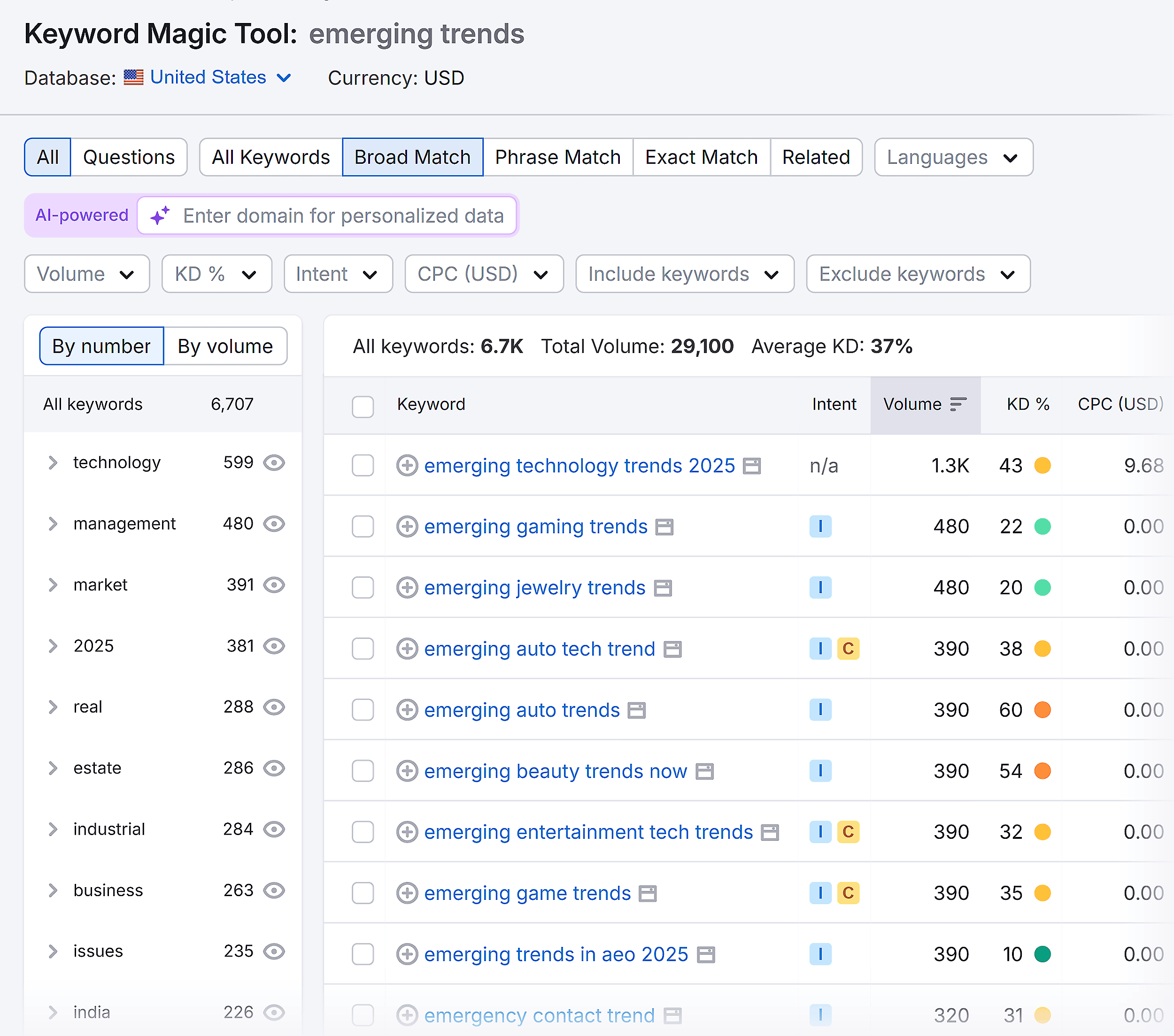
Once you’ve got your list, it’s time to dive deeper into the search intent and content analysis.
3. Analyze Search Intent and Competition
Your content is more likely to fail if you’re guessing what users want instead of analyzing what actually works.
Skip this analysis, and you could waste months creating content that doesn’t get seen. Do it right, and you’ll know exactly what format, depth, and angle will win before you create anything.
Decode What Users Really Want
Search your target keyword on Google and study the first page. The results reveal exactly what users prefer and what Google rewards.
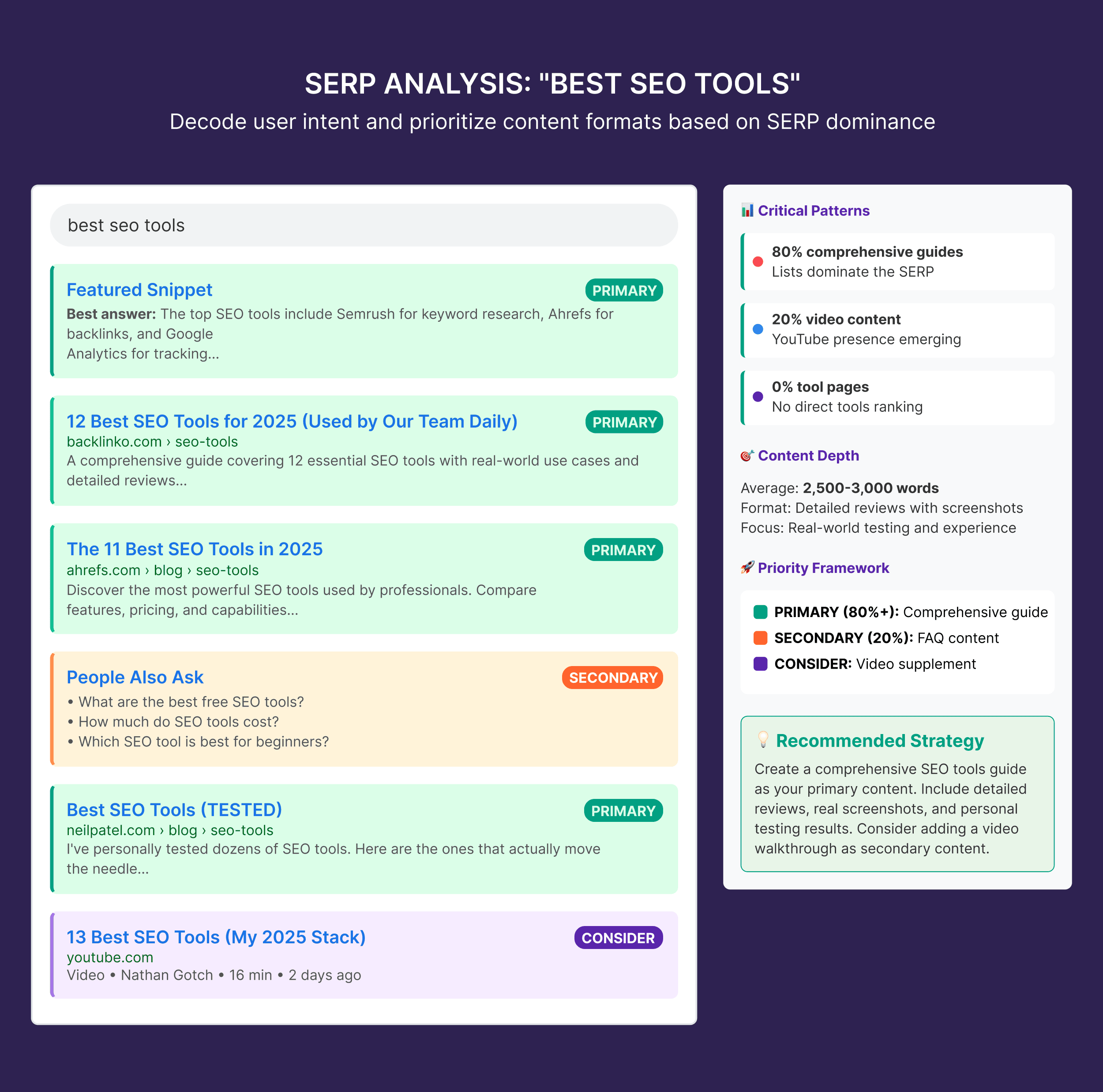
Look for these critical patterns:
- Content format dominance: Count how many results are comprehensive guides vs. listicles vs. tools vs. videos. If most of he top results are step-by-step guides, that’s your format.
- Content depth: Are these 800-word quick answers or 3,000-word deep dives? The average word count of top results tells you how much detail users actually want.
- SERP Features: Featured snippets show what Google considers the “best” answer. People Also Ask boxes reveal related questions you should address. Video carousels signal visual content opportunities.
- Platform diversity: When YouTube videos, Reddit threads, or tool pages dominate the SERP, that’s Google telling you users want different formats for this topic.
YouTube check: Even when videos don’t dominate the main SERP, do a quick search on YouTube if you see any video presence. Sometimes there’s untapped demand that isn’t reflected in Google’s main results.
Find Your Competitive Edge
Beyond analyzing what content is visible in the SERP, take the time to understand why it’s working and where you can do better.
Click through the top 5-10 results and evaluate:
- Information completeness: What important subtopics do they miss? What questions do they leave unanswered?
- Content freshness: Are their examples outdated? Do they reference old tools or strategies?
- User experience: Are they hard to scan? Missing visuals? Poorly organized?
- Proof and credibility: Do they include original screenshots, data, or real examples? Or just generic stock photos and recycled advice?
- Unique value: What makes each piece stand out? What could you do differently or better?
Create Your SEO Brief
Create a simple brief for each target keyword/topic that captures your analysis.
Here are the essential elements to document:
- Target keyword + intent: What users are really trying to accomplish
- Winning format: The content type that dominates the SERP
- Required depth: Approximate word count/scope based on top results
- Key platforms: Only note if they appear prominently in the SERP
- Content gaps: Specific opportunities to do better
- Business fit: How this aligns with your goals
Sample SEO Brief:
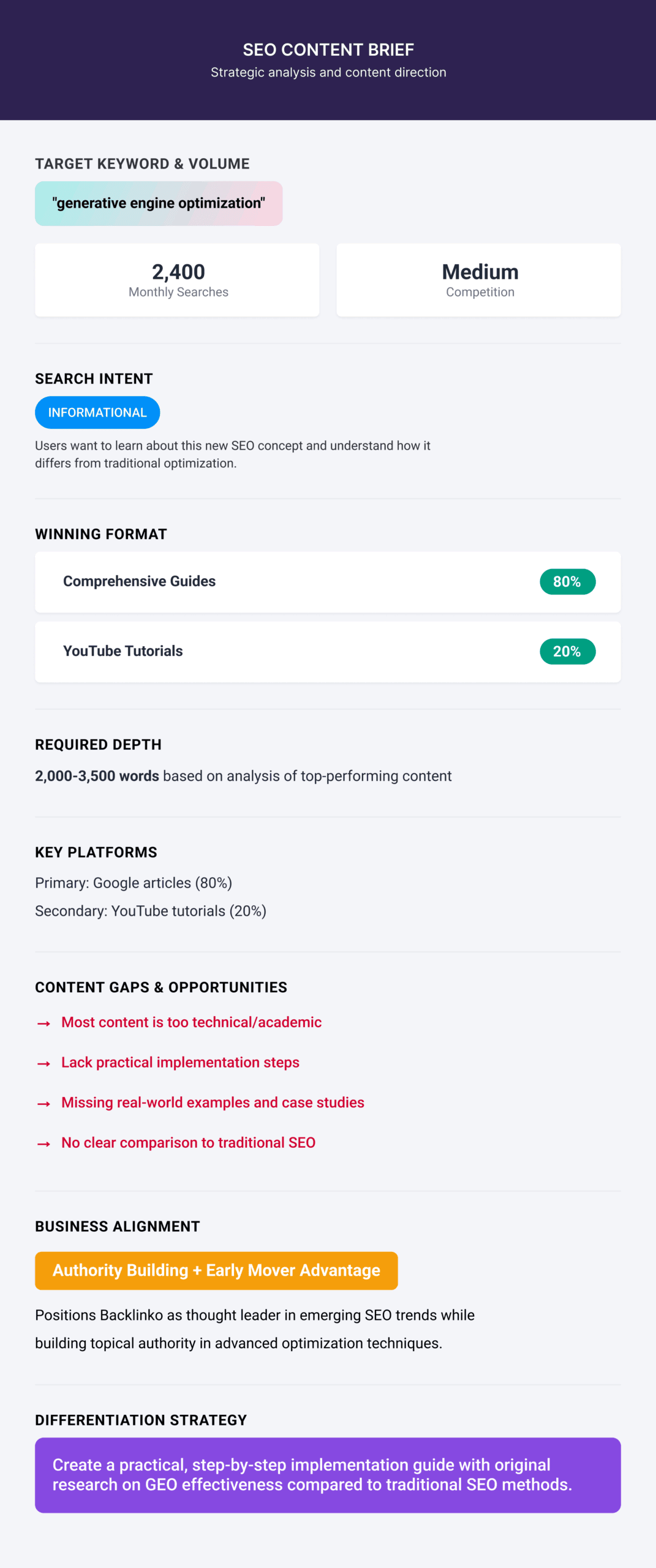
This brief becomes your content roadmap. You know exactly what to create, how comprehensive to make it, and where you can outperform the competition.
Before moving to content creation, ask yourself:
- Does this format align with my content strengths?
- Can I realistically create something 10x better than what’s ranking?
- Will this content type drive my business objectives?
If you answer “no” to any of these, either adjust your approach or consider targeting a different keyword where you can win.
Further reading: How to Create a Content Brief: A Step-by-Step Guide (+ Templates)
4. Create Authority-Driven Content
Your goal is to create something that not only matches search intent but also shows people they’re in the right place.
The best content is clear, useful, and written by someone who knows what they’re doing.
Content That Matches Intent
The foundation of any successful piece is understanding exactly what searchers want and delivering it in the right format.
Real Example: The Best SEO Tools
- Search intent: “I want a list of SEO tools that are actually worth using.”
- Content format: List post
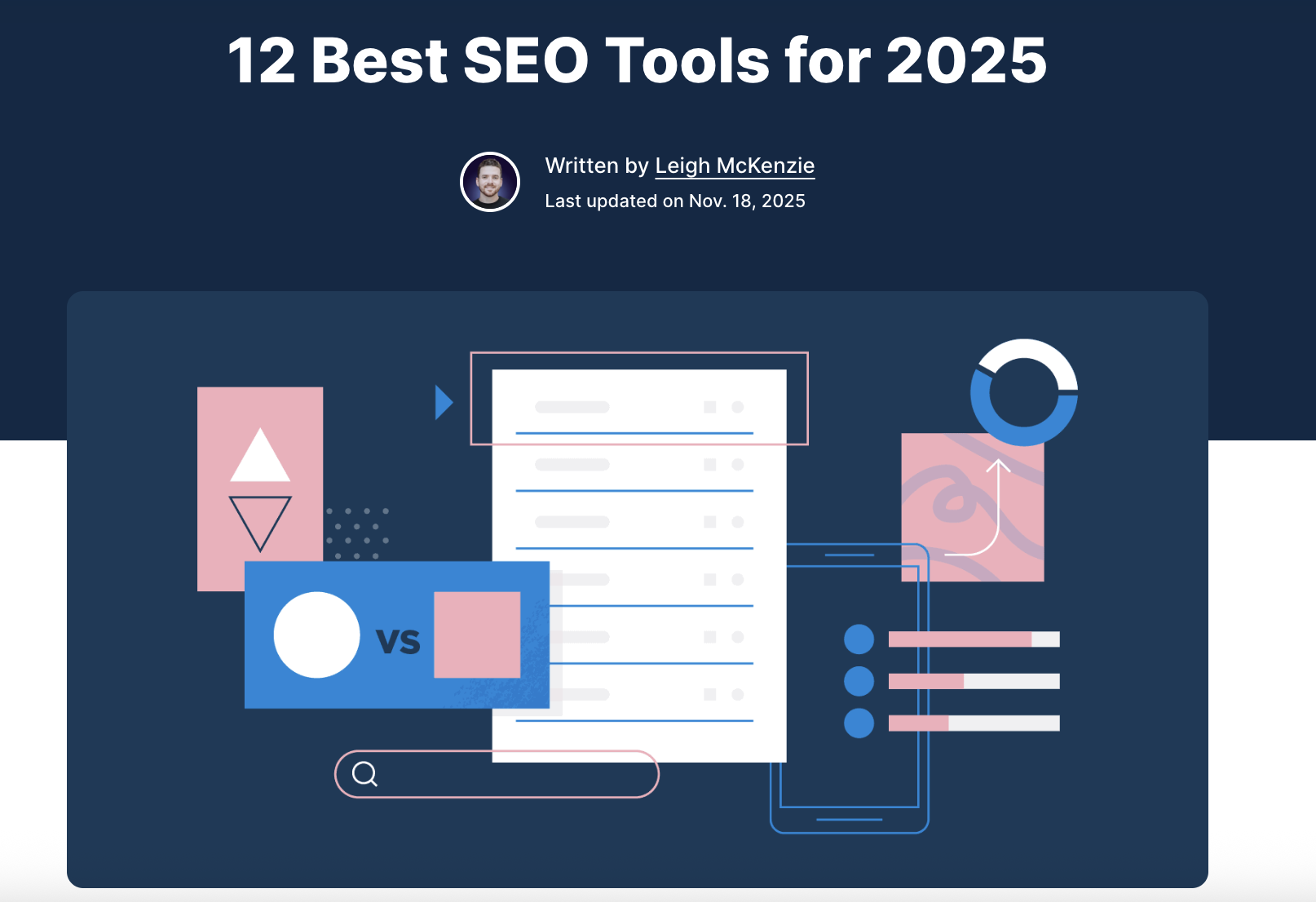
When someone searches “SEO tools,” they want options they can trust — not just a giant list with affiliate links.
Our post performs because it’s curated. Every tool on the list is something we’ve actually used to drive real traffic to Backlinko.
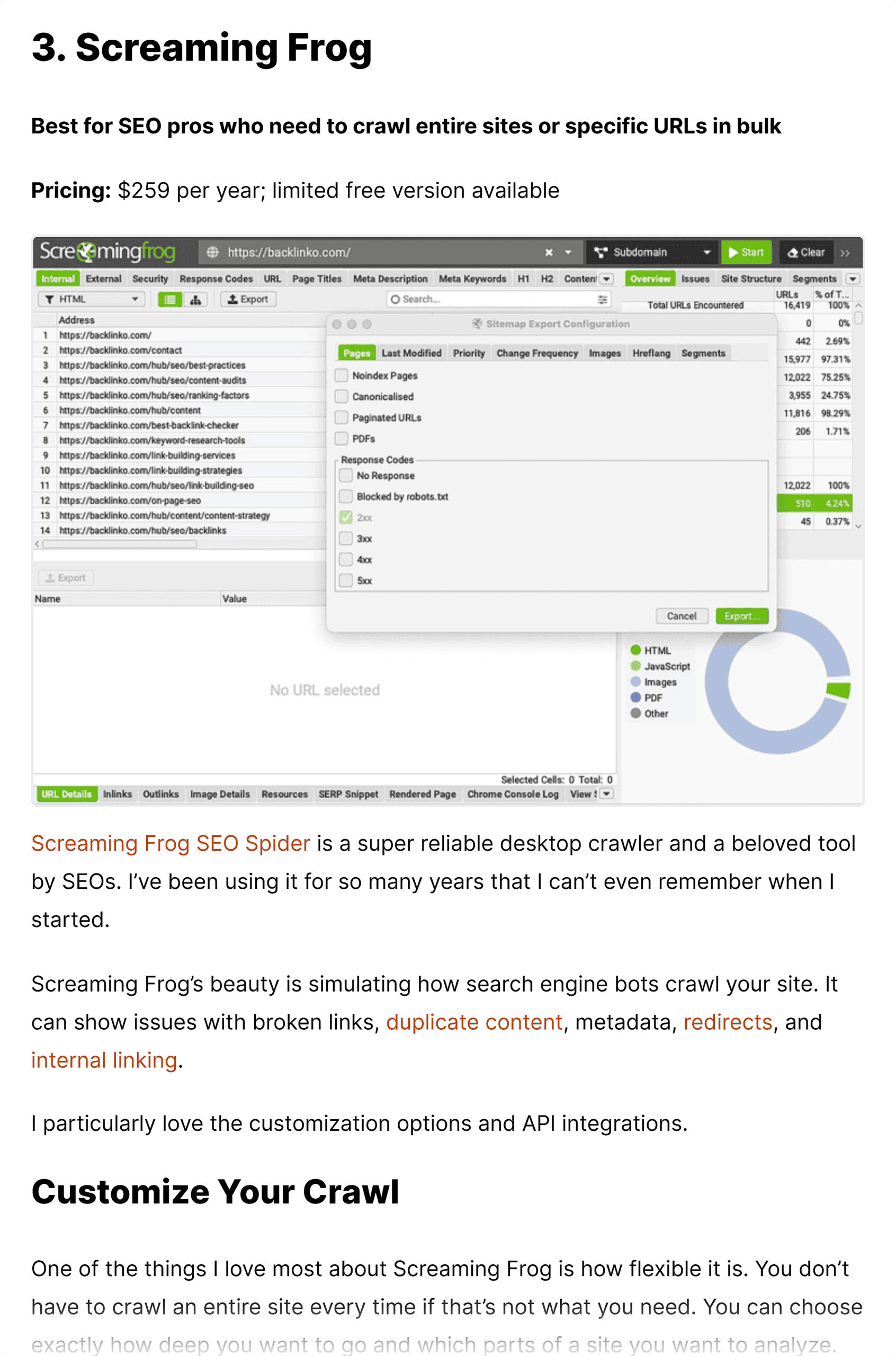
Each section includes:
- A short, clear summary
- A screenshot or visual
- A use case or reason we recommend it
The post doesn’t just rank — it converts. Because it’s built on experience, not just research.
Content With a Strong Hook
Every high-performing piece needs a hook – something that makes people want to reference, share, or link to it.
Real Example: SEO Pricing Guide
This guide ranks for competitive keywords, but more importantly, it’s one of the most cited SEO pricing resources online.
Why? It gives people exactly what they’re looking for — clear pricing ranges, real data, and breakdowns by pricing model.
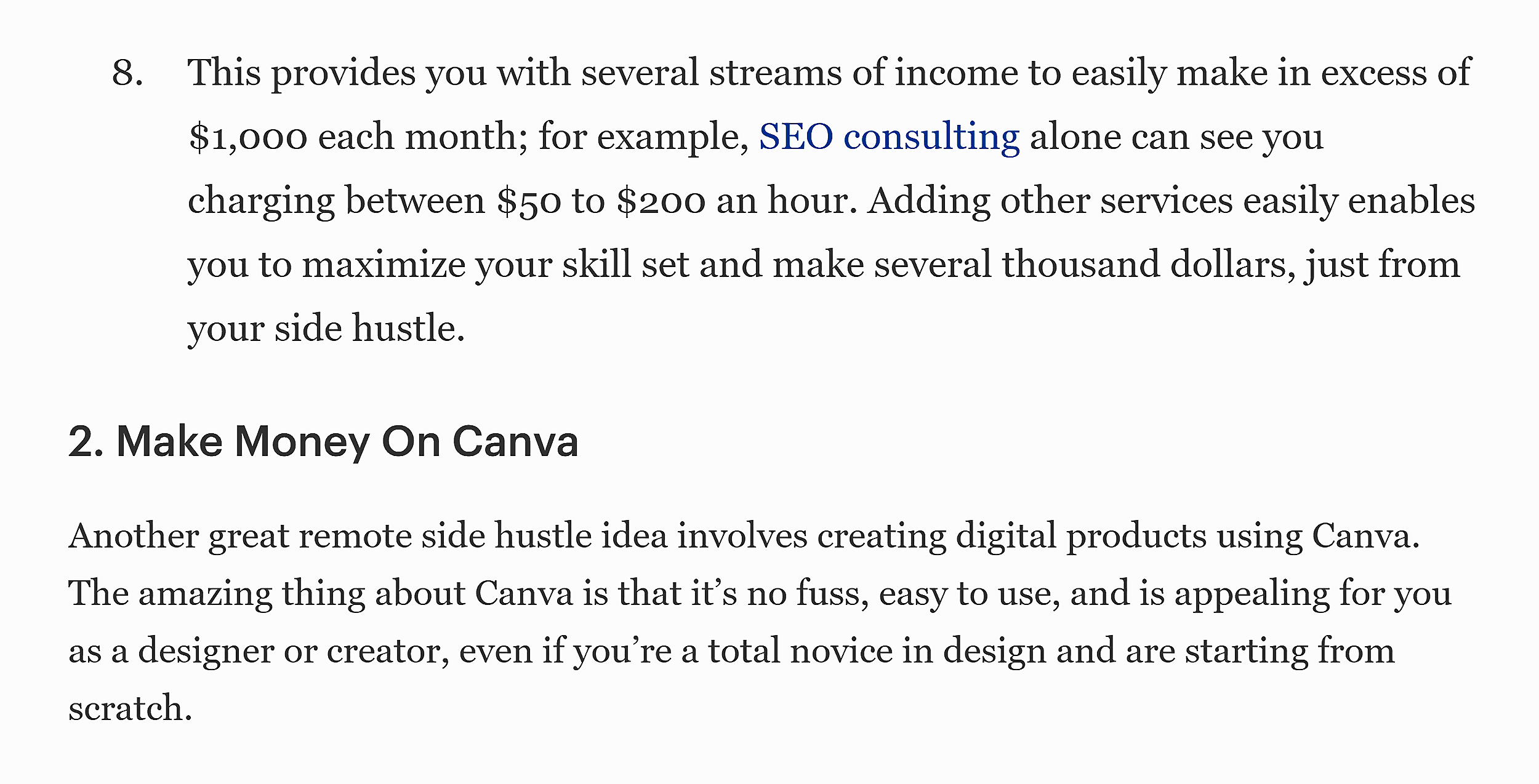
The hook isn’t a flashy gimmick. It’s clarity.
Charts and tables that make pricing easy to understand and appealing to writers and journalists.
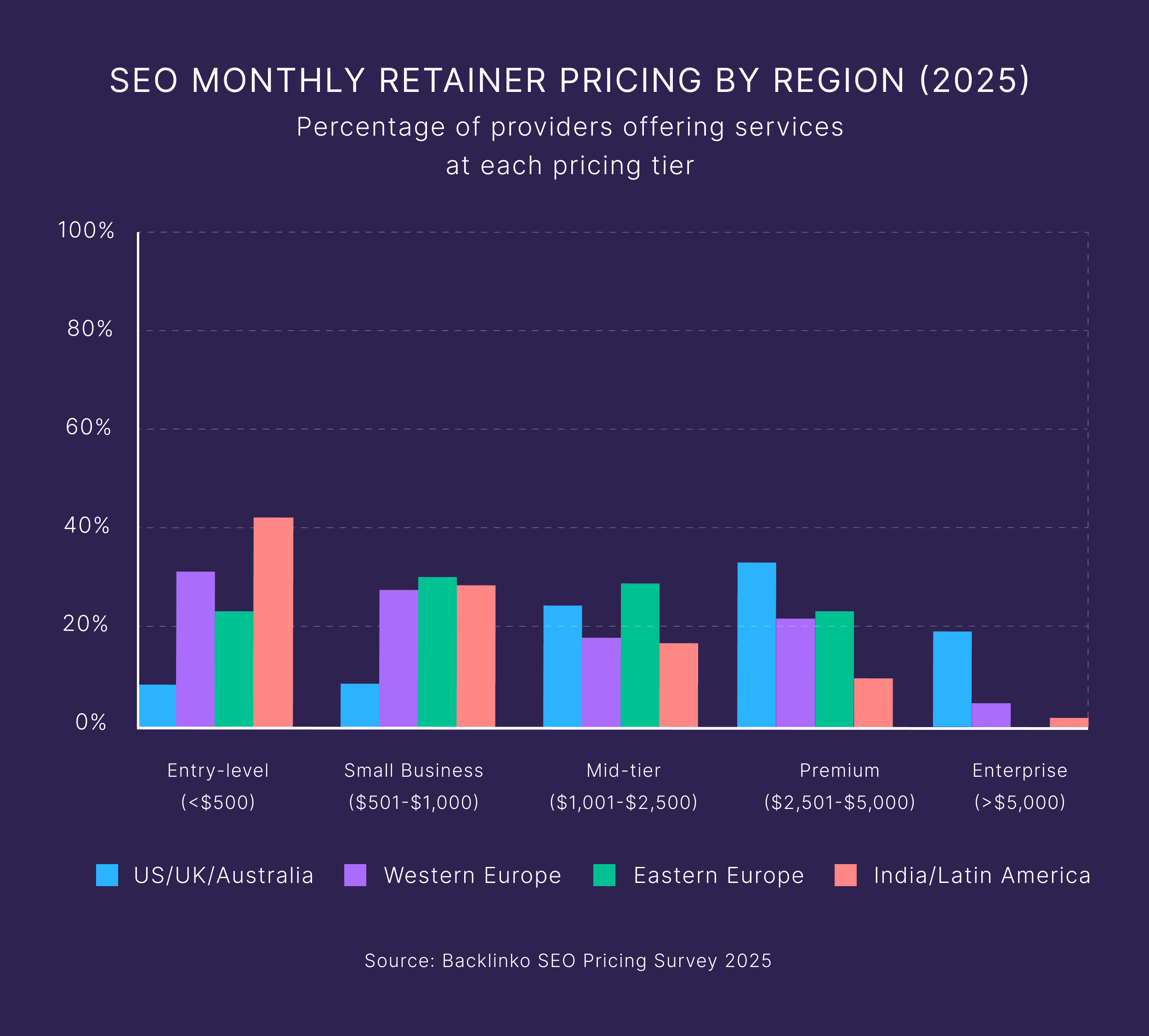
Original insights that aren’t just pulled from other blog posts.
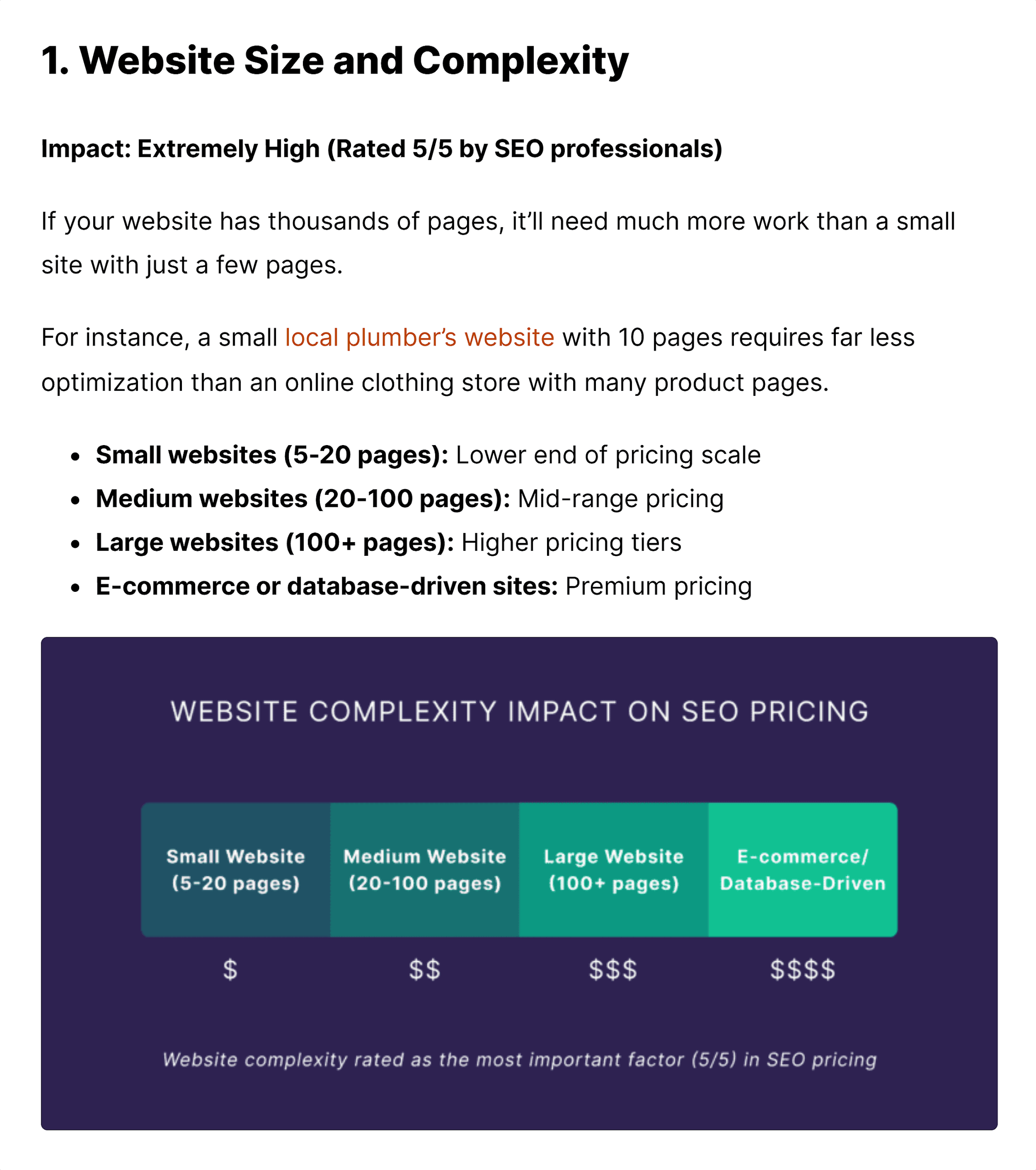
That’s what makes people reference it again and again.
When creating your content, ask:
- Is there a stat, chart, or visual someone might want to link to?
- Are you giving people a takeaway they can quote or drop into their own content?
- Is this something worth bookmarking?
If yes, you’ve got your hook.
Content With Thoughtful Design
You can write the most helpful content in the world, but if it looks like a wall of text, most people won’t stick around.
Real Example: Website Migration Checklist
- Search intent: “I’m about to migrate a site. I don’t want to mess it up.”
- Content format: Comprehensive guide + actionable template
Migrations are high-stakes.
People are looking to mitigate mistakes when executing.
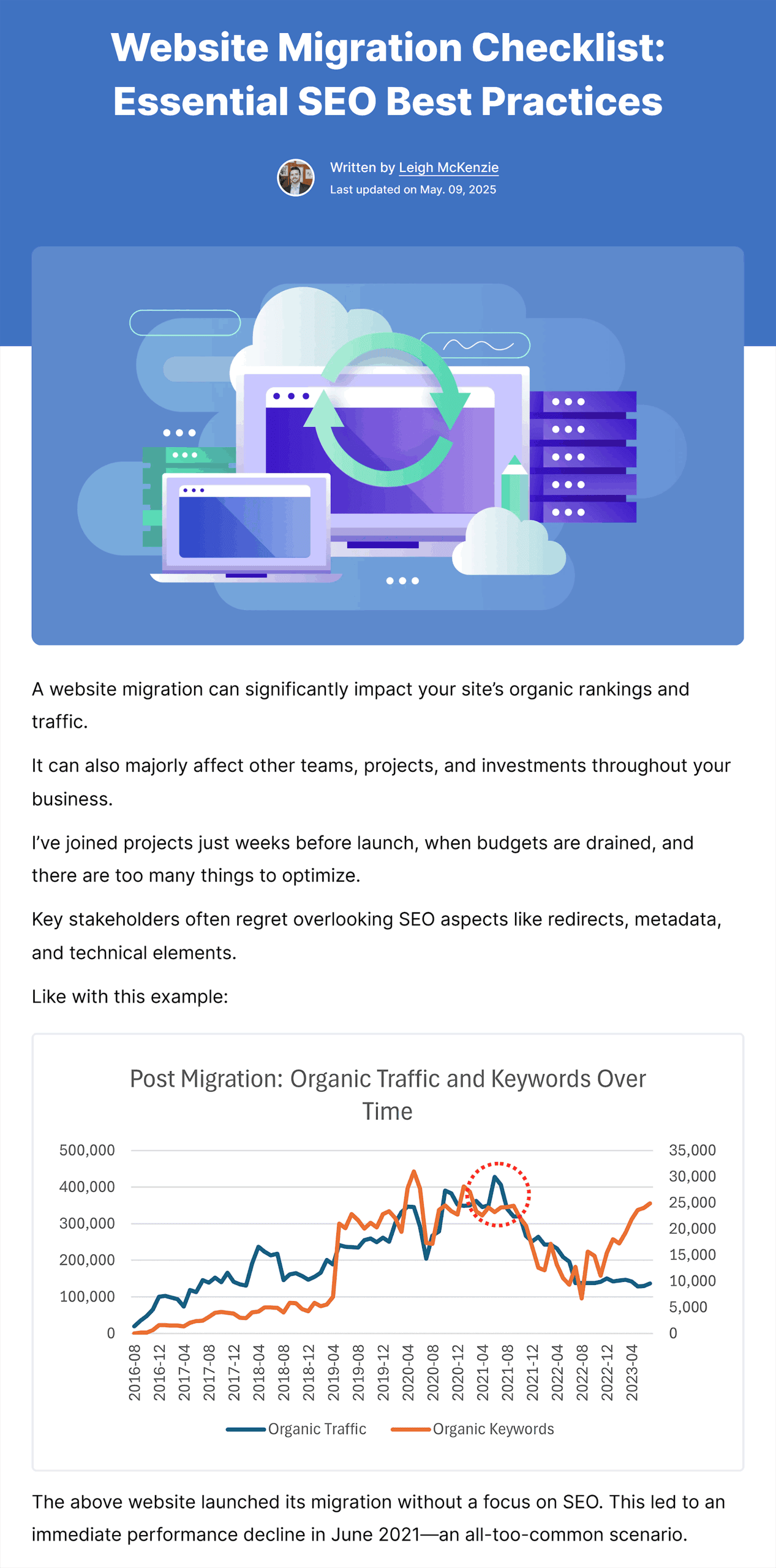
This checklist is exactly what I use when helping clients and running migrations on sites both big and small.
It includes:
- Pre-launch and post-launch steps
- Technical items and SEO checks
- Tips I’ve learned the hard way (so you don’t have to)
The format is fast to scan. Easy to copy. There’s a template to download.
And most importantly, it’s based on real experience.
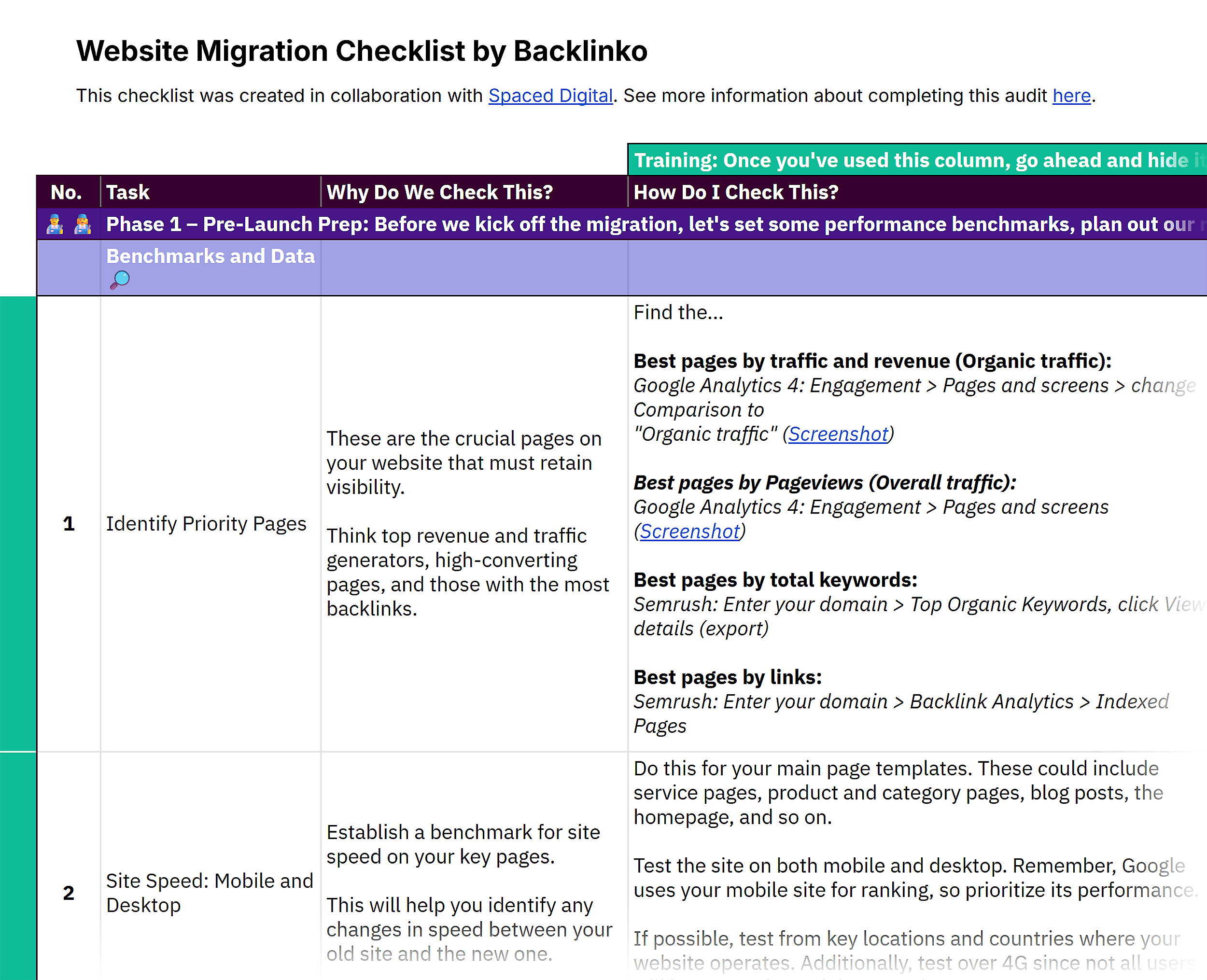
Building on E-E-A-T Principles
Google’s quality rater guidelines emphasize Experience, Expertise, Authoritativeness, and Trustworthiness, and this matters more than ever in 2026 now that AI has led to tons of published subpar content.
Plus, LLMs are constantly seeking out authority signals and third-party validation when formulating its answers.
But this isn’t just about adding author bios. It’s about infusing your content with examples, case studies, and insights that only come from hands-on experience.
For complex topics, consider collaborating with subject matter experts who can add additional layers of credibility and unique insights.
And if you’re working with data, always include a clear, robust methodology so readers understand how you arrived at your insights.
Further reading: Google E-E-A-T: How to Create People-First Content (+ Free Audit)
Creating Information Gain
In competitive niches, standard advice isn’t enough. Your content needs to offer something that isn’t available elsewhere — what’s often called “information gain.”
Our post on information gain covers this in depth, but here are a few ways to stand out:
- Original research or data: Share findings from your own experience
- Unique frameworks: Create step-by-step processes that simplify complex topics
- Custom visuals: Develop graphics that explain concepts better than text alone
- Advanced tactics: Share strategies beyond the basics that competitors miss
- Clear organization: Structure information in a more logical, usable way
Using AI Thoughtfully
I use AI all the time for content creation. And I encourage my team to do the same.
These tools are pretty good and are only getting better. But they cannot replace your lived experiences — which is what your readers want.
Use AI to:
- Create outlines and structure ideas
- Find examples to support your points
- Generate first drafts you can improve
- Organize complex information
But keep control of your strategy and voice.
This keeps the human connection readers want while using AI’s strengths.
Further reading: Our guide to using AI for exceptional writing shows you how to use these tools while maintaining quality and originality.
5. Optimize for Clarity and Context
On-page SEO in 2026 is all about clarity and context.
You want your content to be clear for users, search engines, and the AI systems that increasingly pull answers from your pages.
But here’s the thing: this is about doubling down on what quality-focused SEOs have always known works.
The difference now? The stakes are higher.
Poor content structure and unclear messaging get left behind faster than ever.
To show you what that looks like, let’s break down one of our top-performing posts: International SEO.
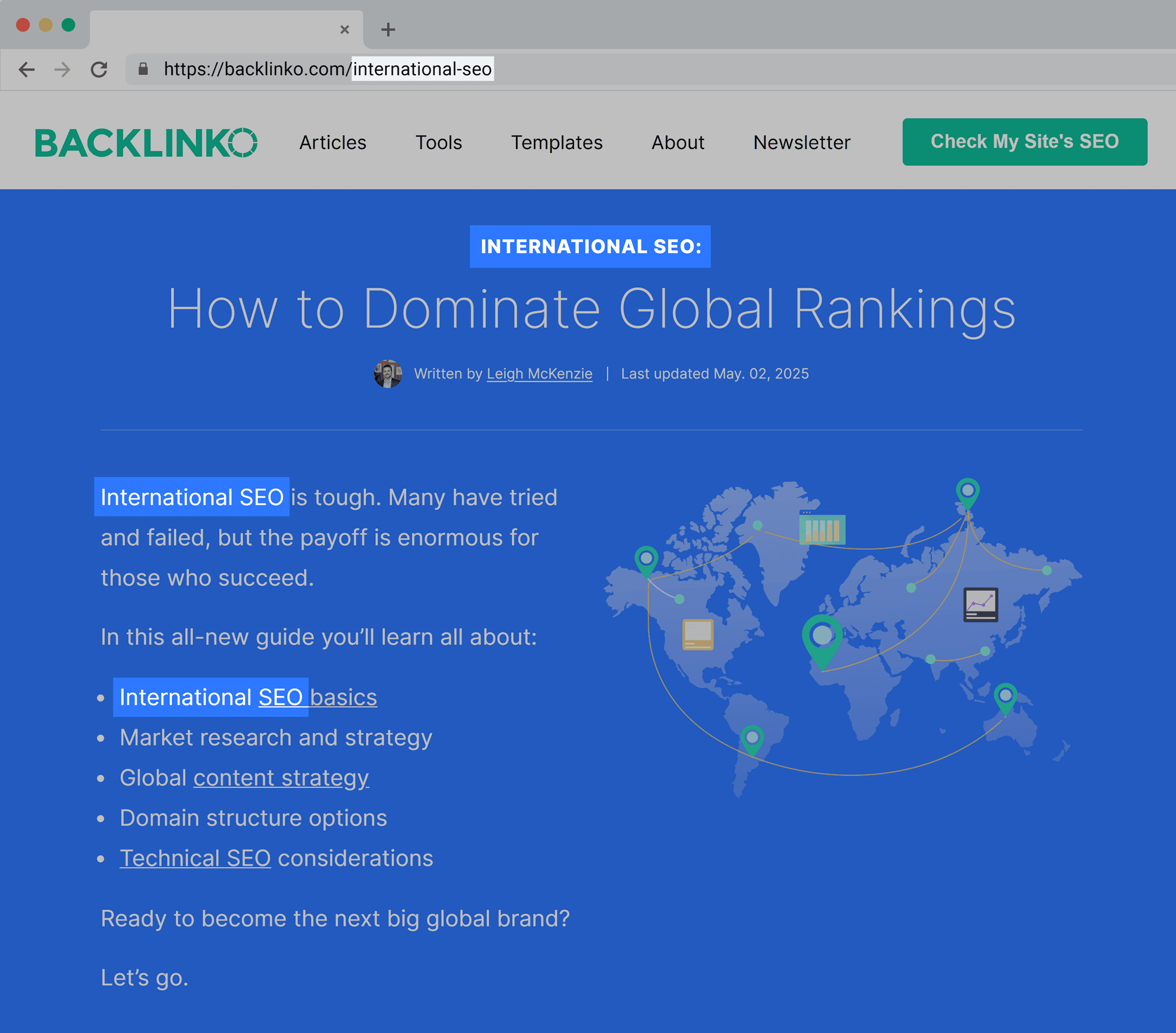
This guide ranks for over 100 keywords, including “international SEO strategy” and “how to do international SEO.”
It’s not ranking because of keyword stuffing or clever tricks. It’s ranking because it’s easy to interpret and semantically complete.
Title Tags and Headings
Your page title should be simple and keyword-aligned:
International SEO: How to Dominate Global Rankings
Each section of your guide should cover a key part of the topic with clear, descriptive headings.
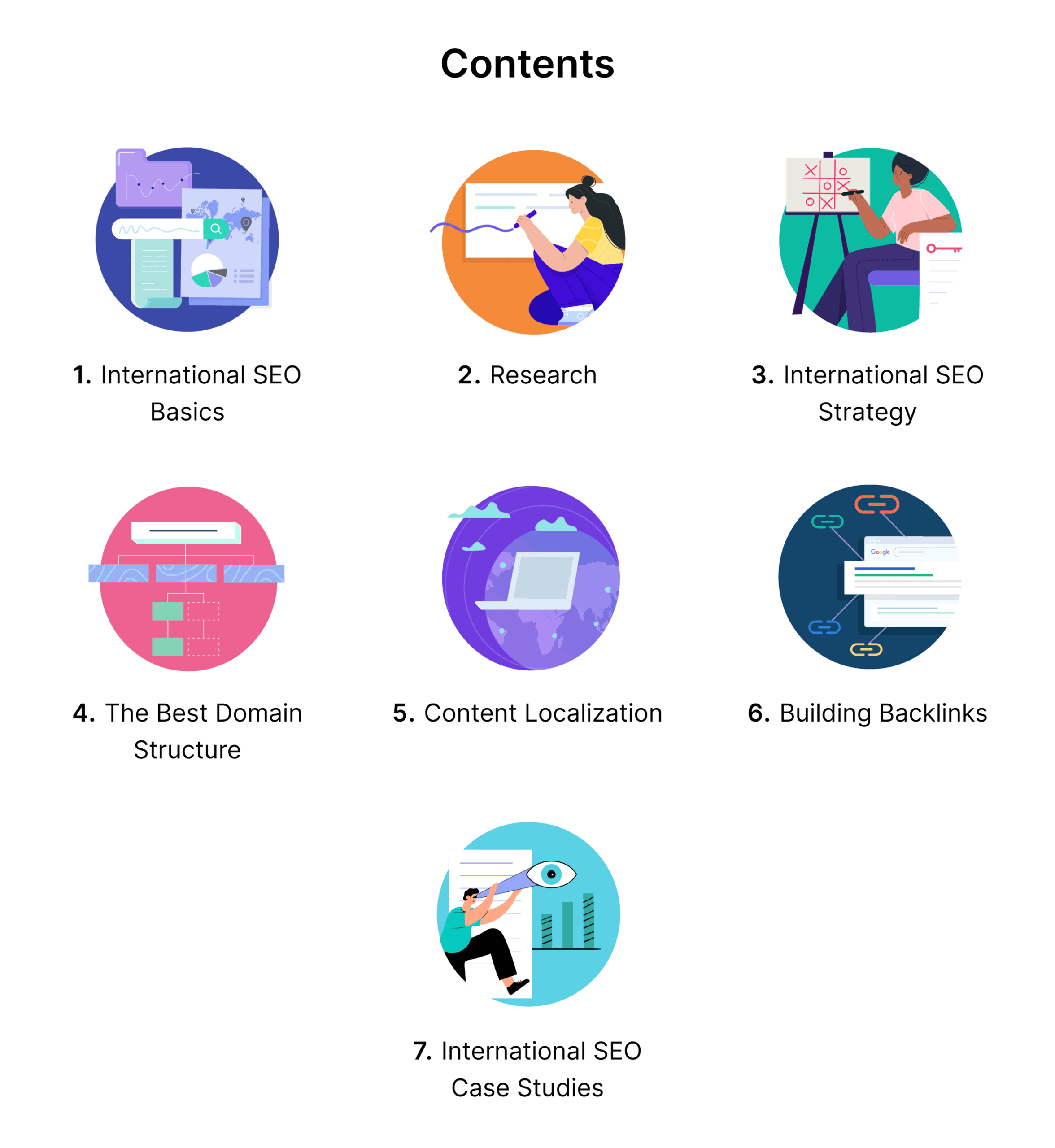
Your headings should work like a table of contents. Someone should be able to scan just your headings and understand exactly what your content covers.
URL Structure
Keep URLs short and focused. No unnecessary parameters. No date stamps. No category folders.
Just the core topic in a format that’s easy to remember, share, and understand.
Internal Links
Link to related guides using helpful, descriptive anchor text.

These links build context for readers and for Google.
Further reading: The complete guide to internal linking
Semantic Relevance
Instead of repeating your main keyword, include related terms naturally throughout your content.
For instance, our international SEO post covers the topic naturally and completely — exactly what search engines (and users) want.
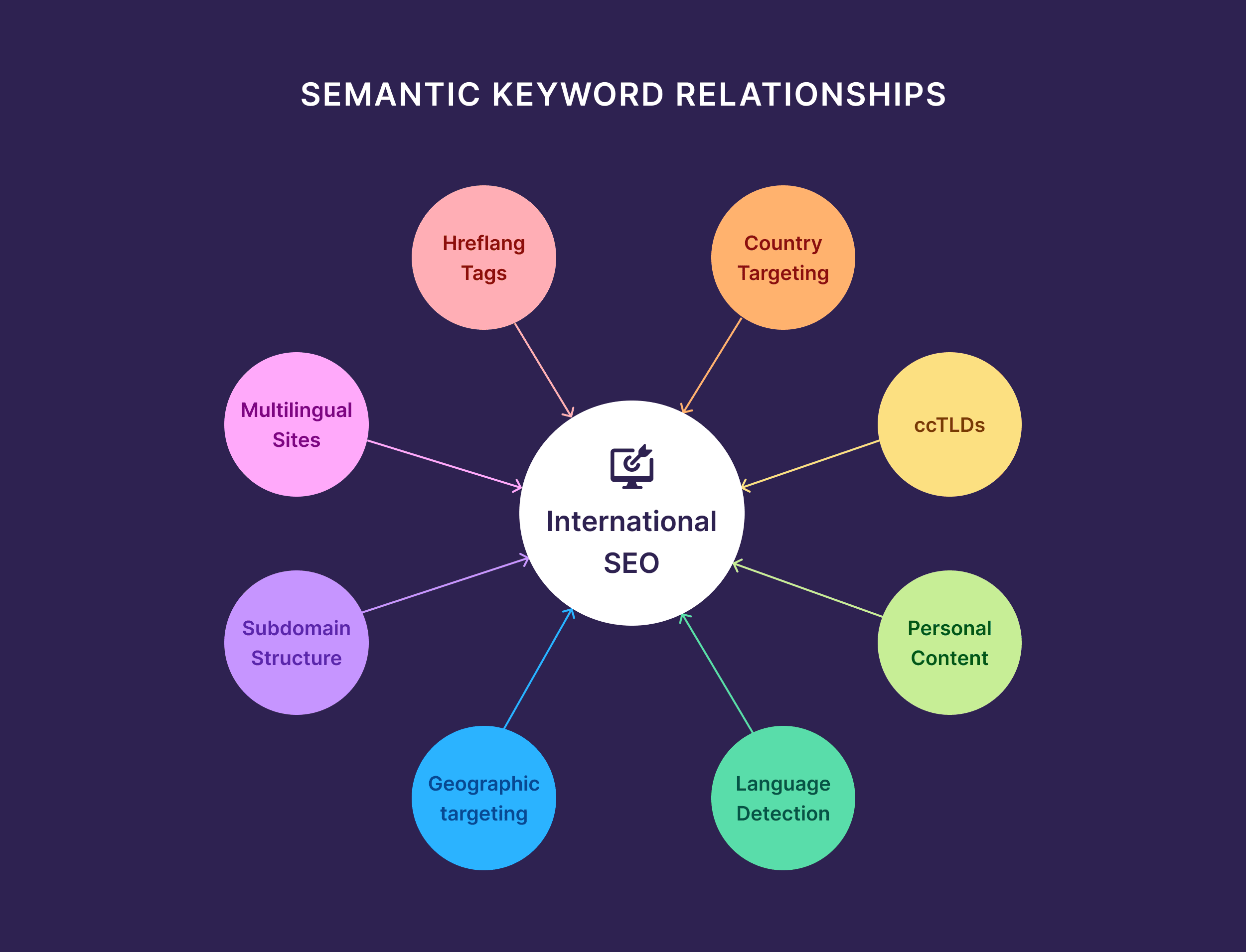
Further reading: What is Semantic SEO?
Content Structure and Scannability
Maintain a clean layout, using short paragraphs and distinct sections.
The structure helps readers stay engaged, and it helps search engines and AI models understand your content hierarchy.
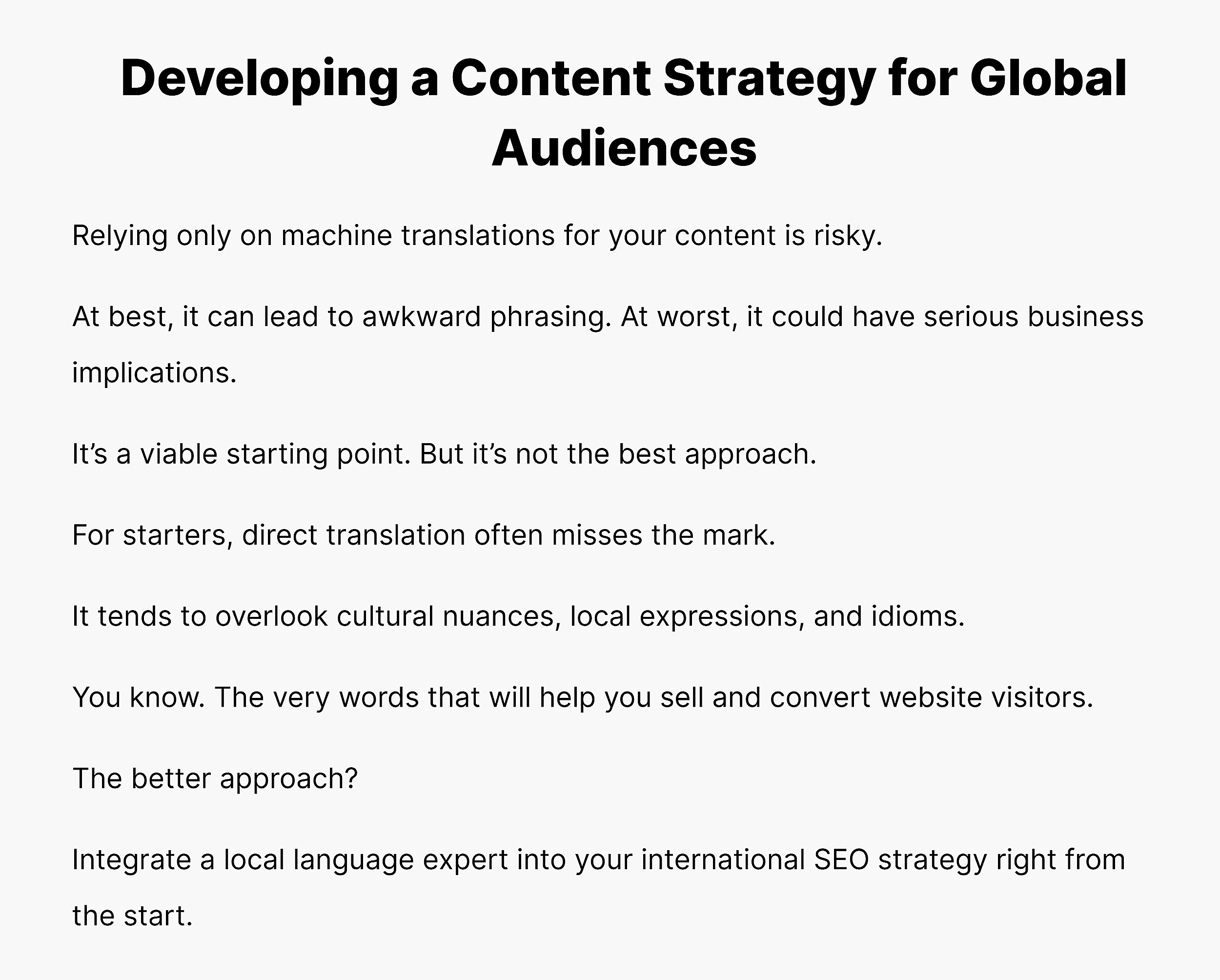
Information Architecture That Works
The best on-page optimization happens at the planning stage, not after you’ve written 2,000 words.
Before you write, ask yourself:
- What’s the main question this content answers?
- What related questions will readers have?
- How can I organize this information logically?
- What supporting details do readers need to take action?
This thinking creates content that naturally includes the context and semantic relationships that modern search systems look for.
Further reading: The Definitive Guide to SEO Copywriting
Technical Optimization Basics
Don’t overlook the fundamentals that make your content accessible to search engines.
Meta Descriptions
Write compelling descriptions that accurately summarize your content.
While not a direct ranking factor, good meta descriptions help make your content topic clear and consistent.
Image Optimization
- Use descriptive file names (international-seo-checklist.png not image-001.png)
- Write helpful alt text that describes the image content
- Compress images for faster loading
Page Speed
Slow pages hurt user experience and rankings. Use tools like Google PageSpeed Insights to identify and fix speed issues.
Mobile Responsiveness
Ensure your content looks good and functions well on all devices.
Further reading: Our complete on-page SEO checklist covers all the technical details you need to optimize every page.
6. Build Links and Earn Citations
Link building is still important in 2026, but the goal has changed.
You need to influence how search engines and LLMs understand our brand.
Basically, think more like a PR professional.
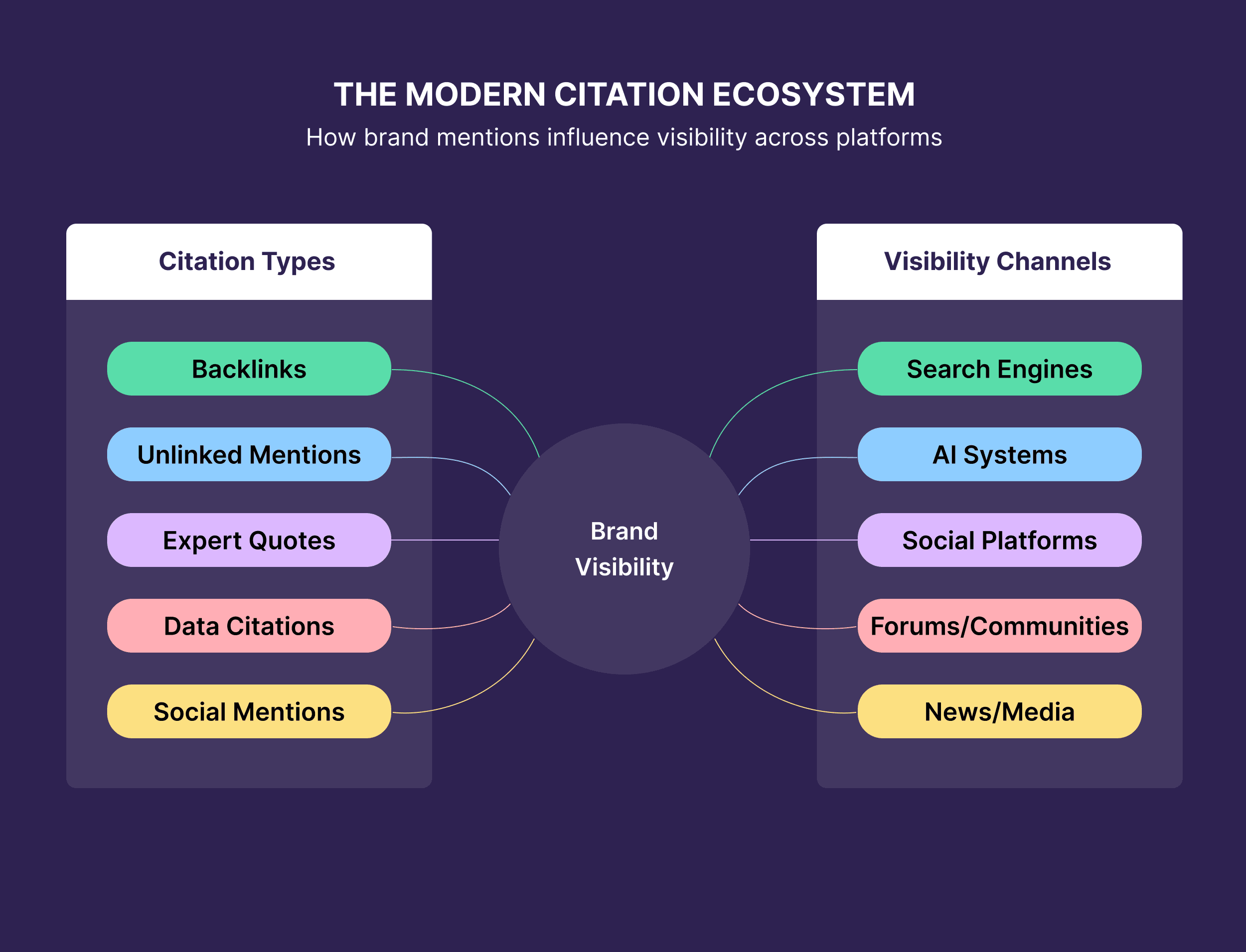
Your goal is comprehensive visibility across the web — from traditional backlinks to forum mentions to expert quotes that AIs reference.
That means focusing on:
- Earning links from relevant, trusted sources
- Getting mentioned alongside your competitors
- Showing up in blog posts, listicles, Reddit threads, and social conversations
- Building a consistent citation profile across the web
Competitor Link Analysis
If you’re just starting out (or even if you’re not), this is one of the fastest ways to find link opportunities that actually matter.
The idea is simple:
- Find out who’s linking to your competitors
- Figure out how they earned those links
- Reach out with something better, clearer, or more up-to-date
Be sure to analyze the context. Are competitors being:
- Quoted in blog posts?
- Listed in “best of” roundups?
- Mentioned on social or Reddit?
- Linked to their homepage, blog, or tools?
These patterns show you what kinds of content are earning links, and what people are already referencing.
How to do it with Semrush:
- Open Backlink Analytics
- Enter a competitor’s domain
- Click on the Backlinks or Referring Domains tab
- Sort by New & Lost, Authority Score, or Link Type
- Scan for patterns: where are the best links coming from, and why?
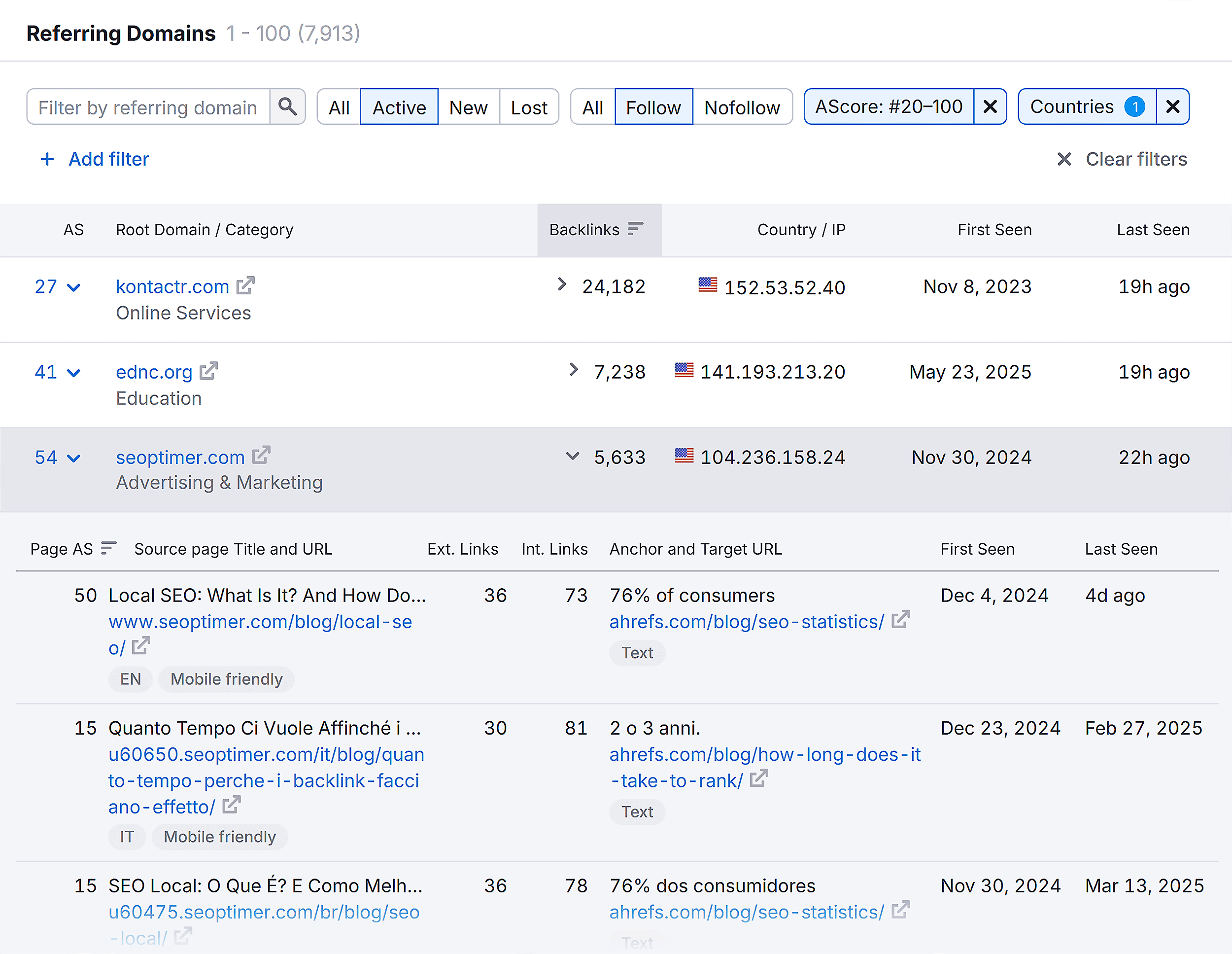
Statistics Link Building
People love to link to stats, especially if you package them well.
That’s why our research studies on Google CTR and Blog Content earned hundreds of links.
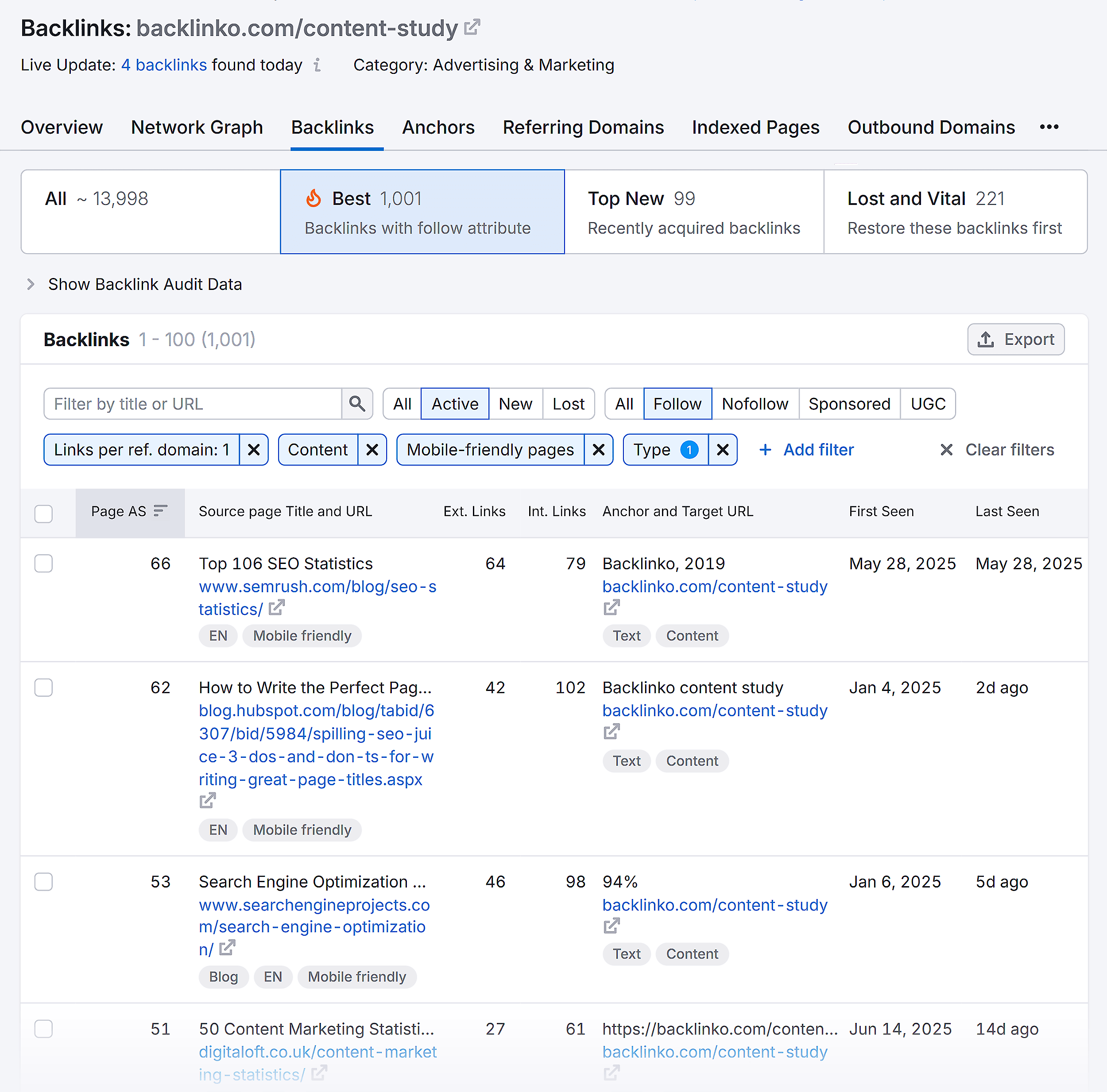
If you can share:
- Original insights
- Clean charts
- Simple stats people can quote
You’ve got a link magnet.
Even if you don’t have proprietary data, you can:
- Repackage public data into new formats
- Combine insights across studies
- Create quick summary stats that are easy to cite
For example, we used existing data to report on the growth of TikTok.
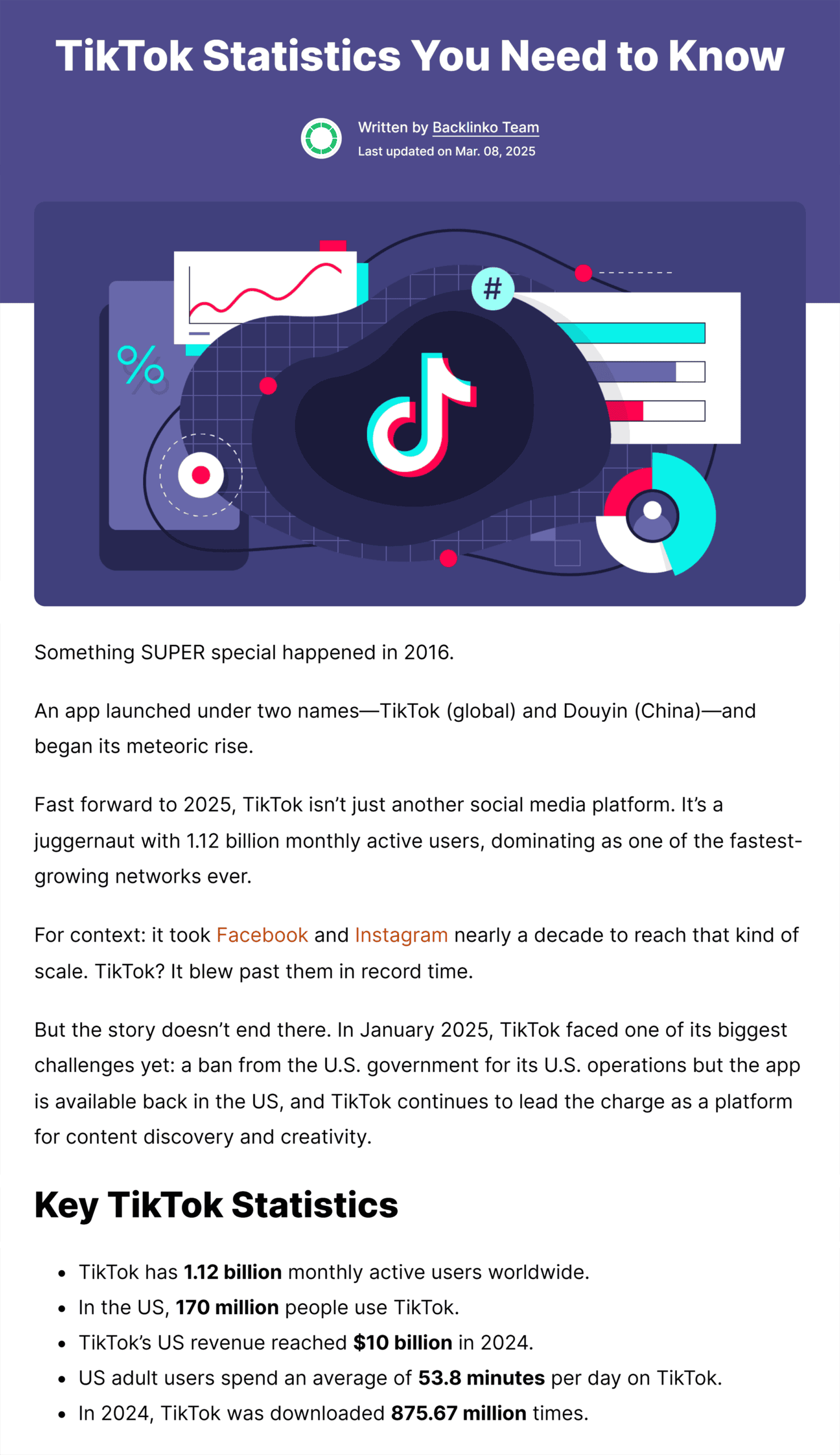
This page has over 2.4k referring domains.
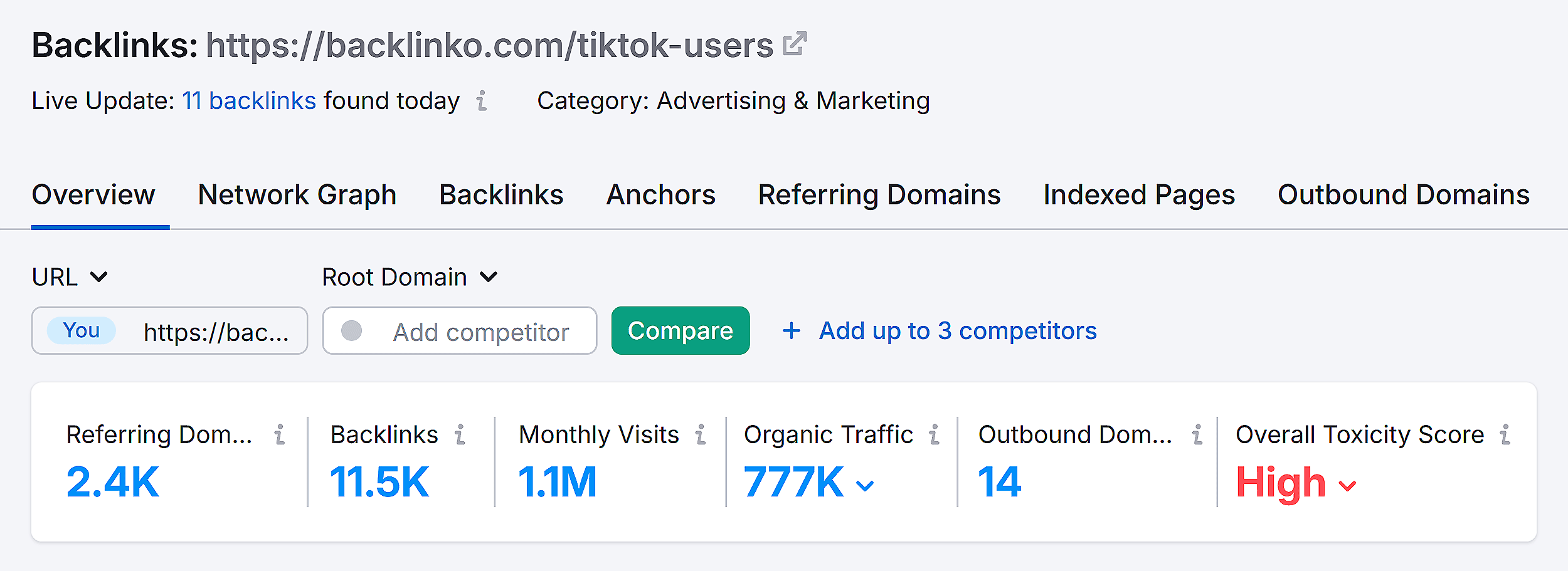
And websites like Fast Company, Adobe, and HubSpot Link to it.
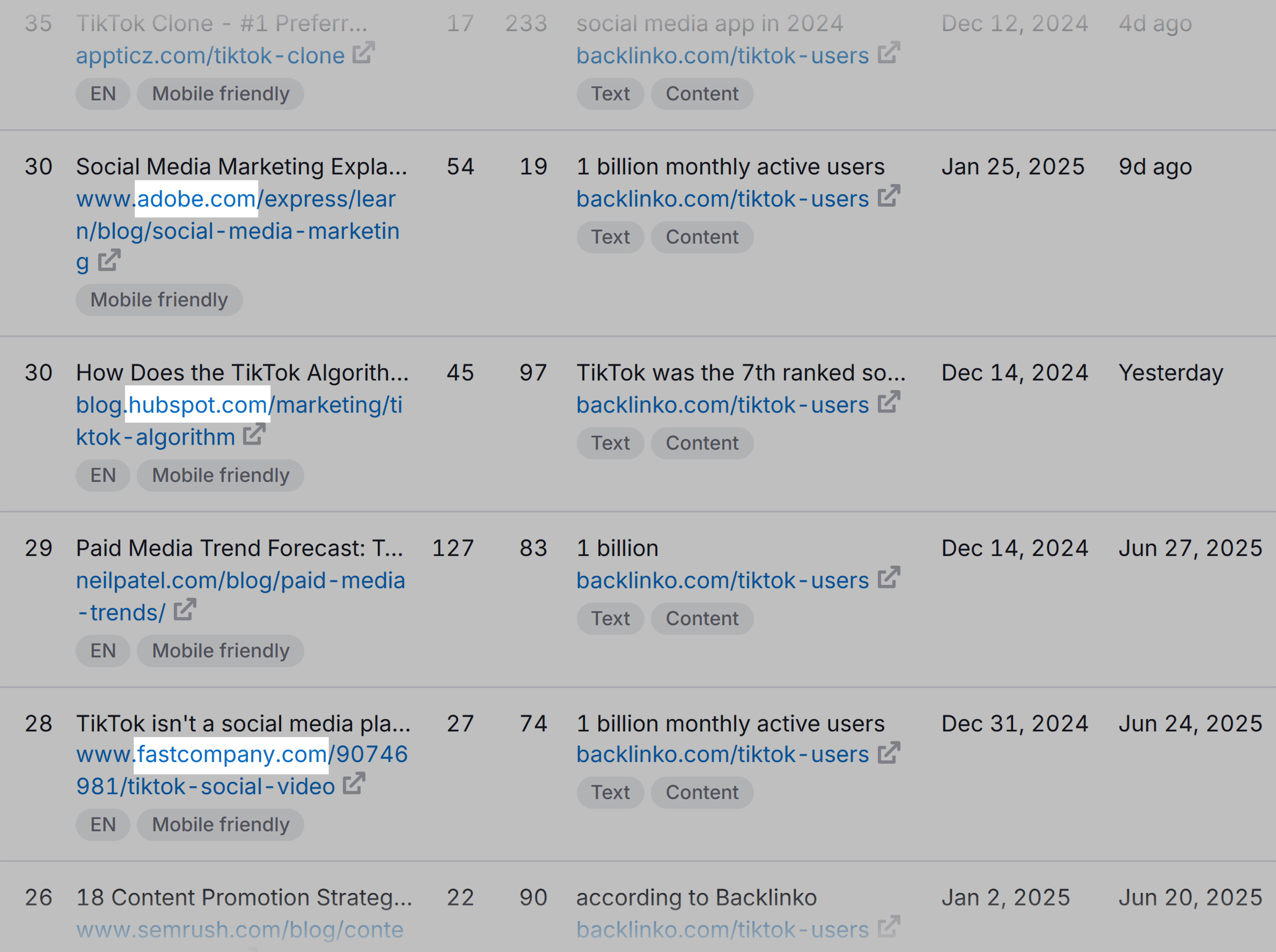
Expert Commentary
Journalists and content creators constantly need expert quotes.
If you respond to the right prompts, you can land backlinks from media sites, blogs, and B2B publishers.
You don’t need to respond to everything.
Just focus on requests that align with your industry, your product, or your expertise.
For instance, a writer on LinkedIn was looking for interesting examples of teams using Monday.com to feature in her Zapier article.
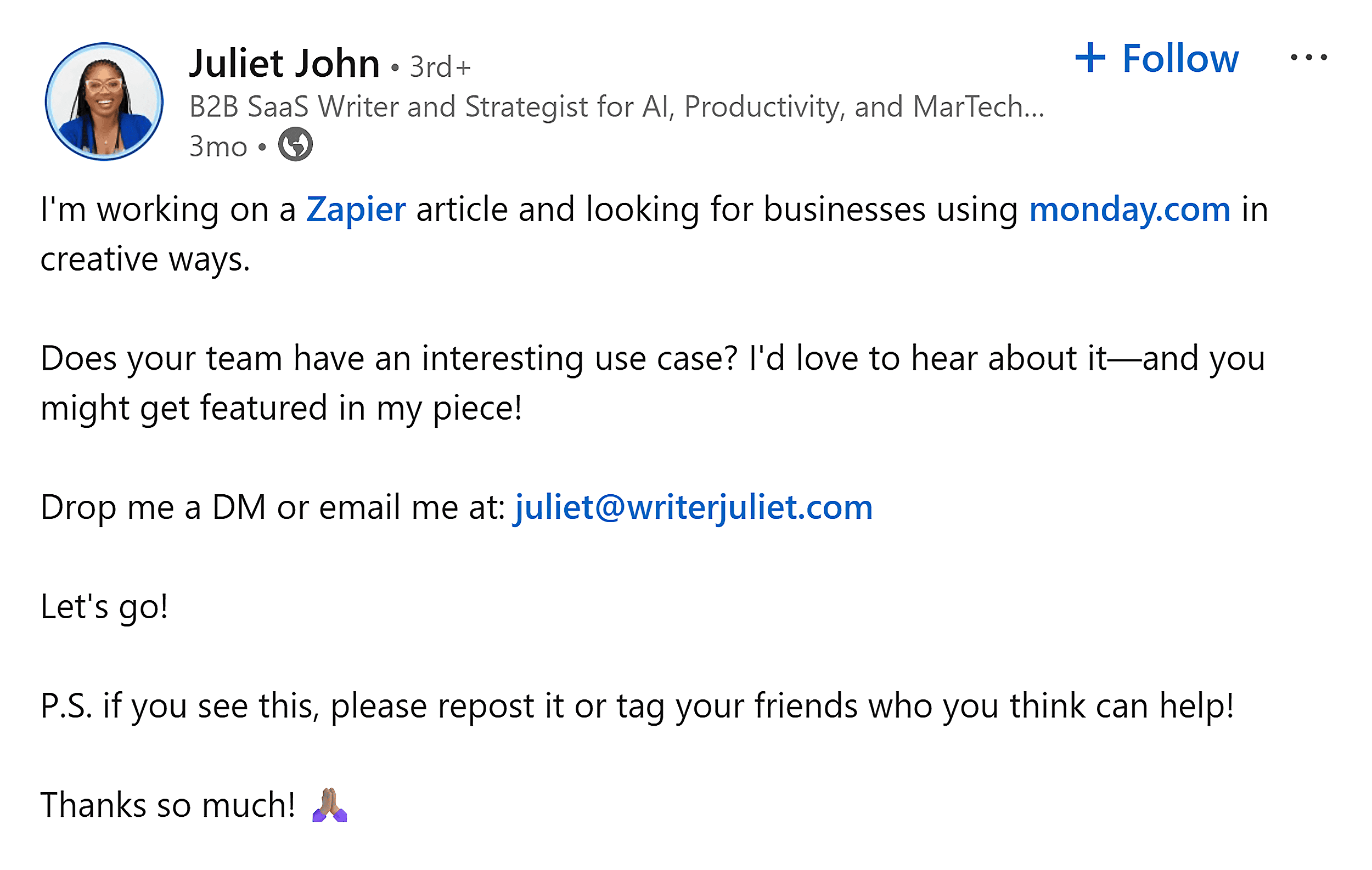
We sent a quick video on how we use Monday.com on Backlinko.
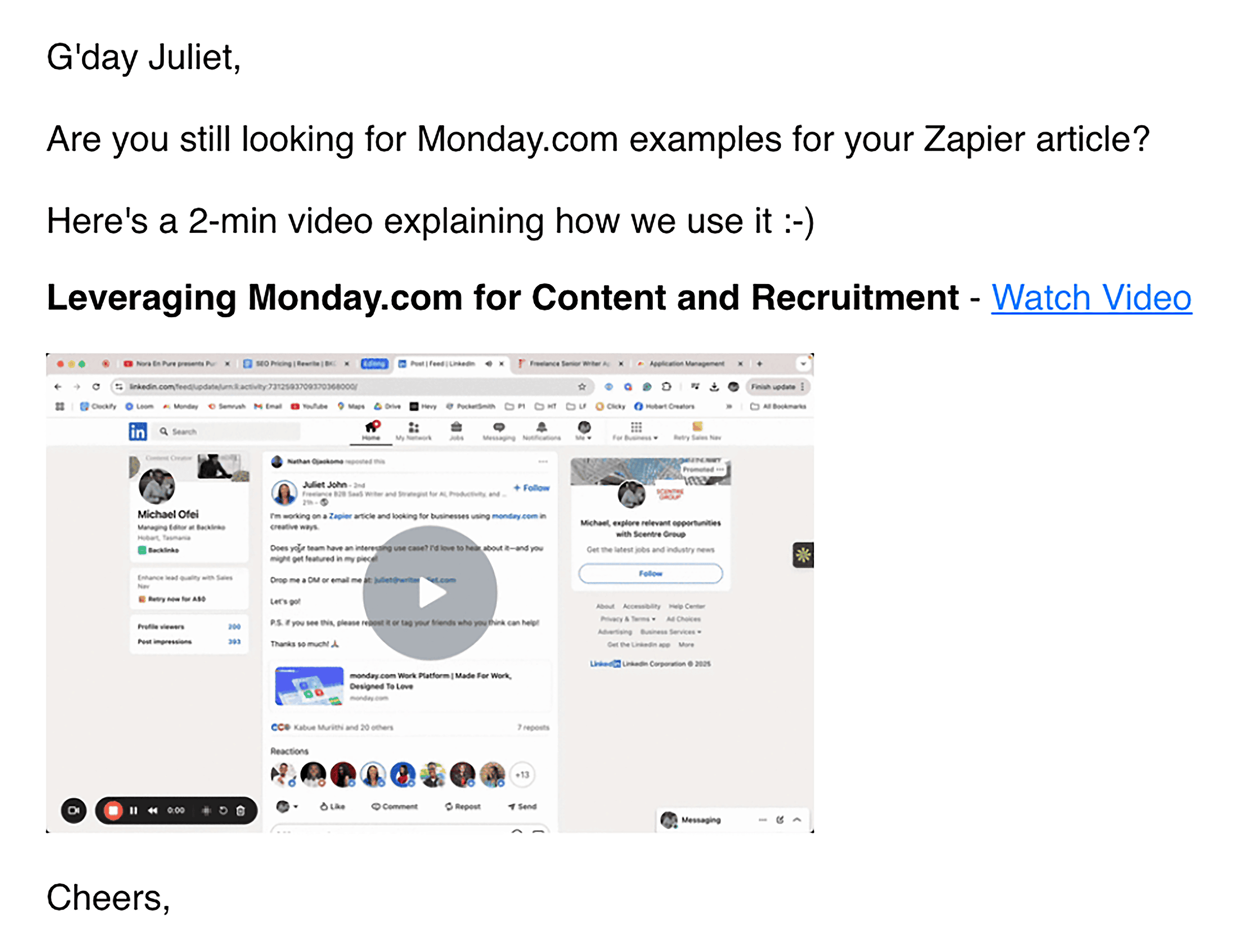
The writer liked our pitch and linked to Backlinko in the article.
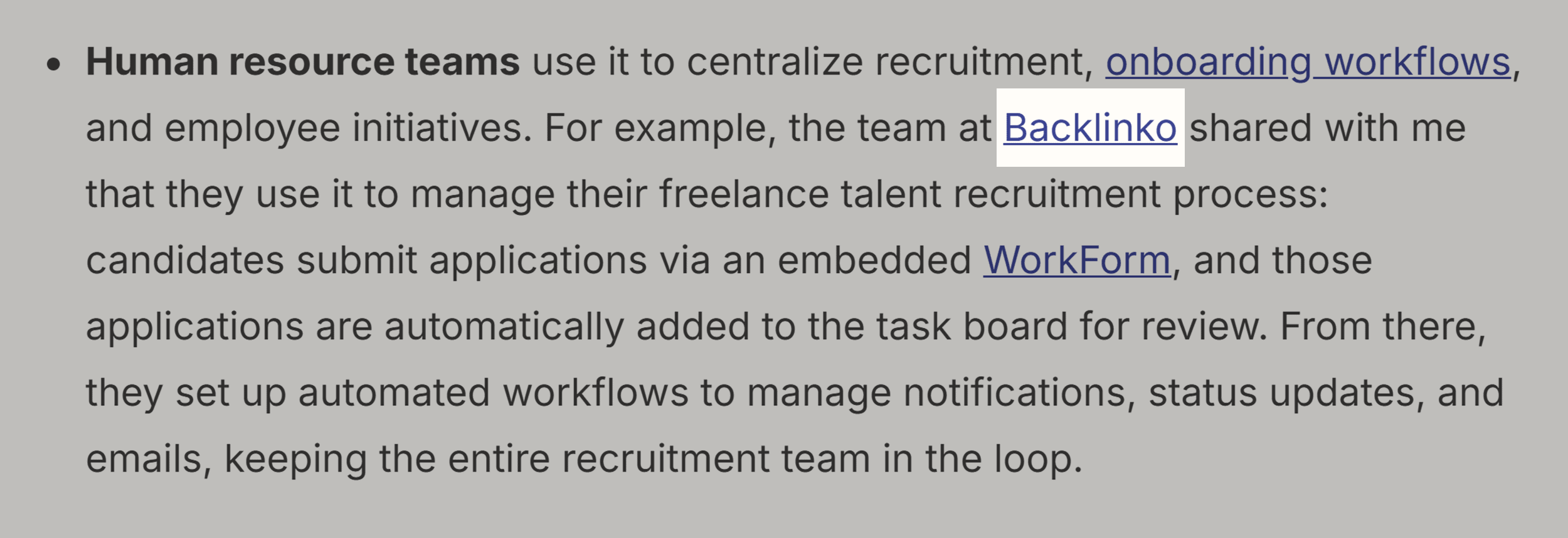
A few places to monitor:
- HARO
- Featured
- MentionMatch (formerly Help a B2b Writer)
- Twitter/X journalist threads and Substack callouts
Further reading: 6 Best HARO Alternatives (Expert Review)
7. Improve and Update Your Content
If you want to stay visible, you need to keep your content fresh, accurate, and relevant. It’s also what users want.
For example, we got a 70.43% organic traffic boost after updating our SEO Trends article in April 2025.
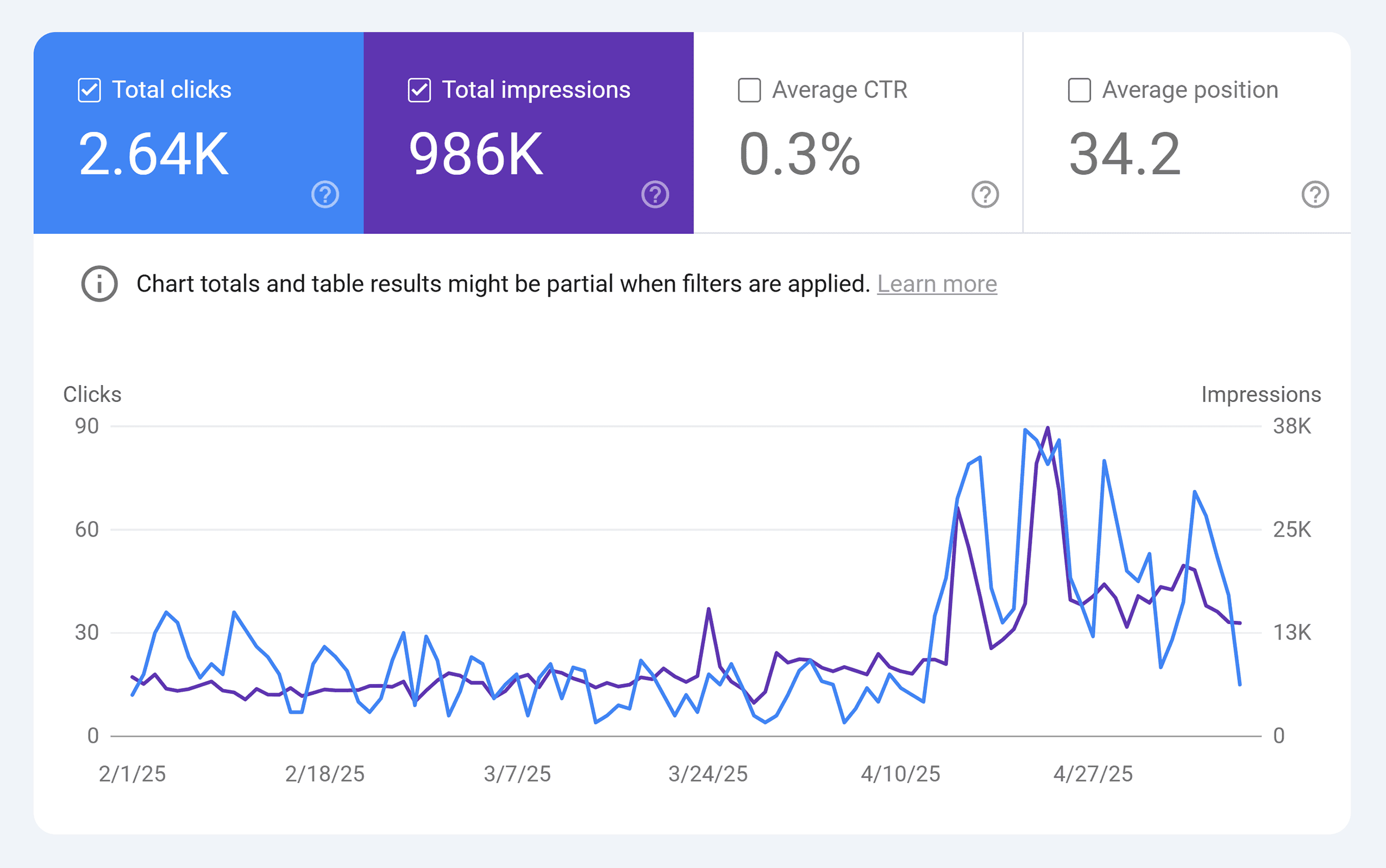
That’s the power of content maintenance. And often, it delivers a much higher ROI than creating something from scratch.
Content naturally ages and can lose its ranking and relevance over time.
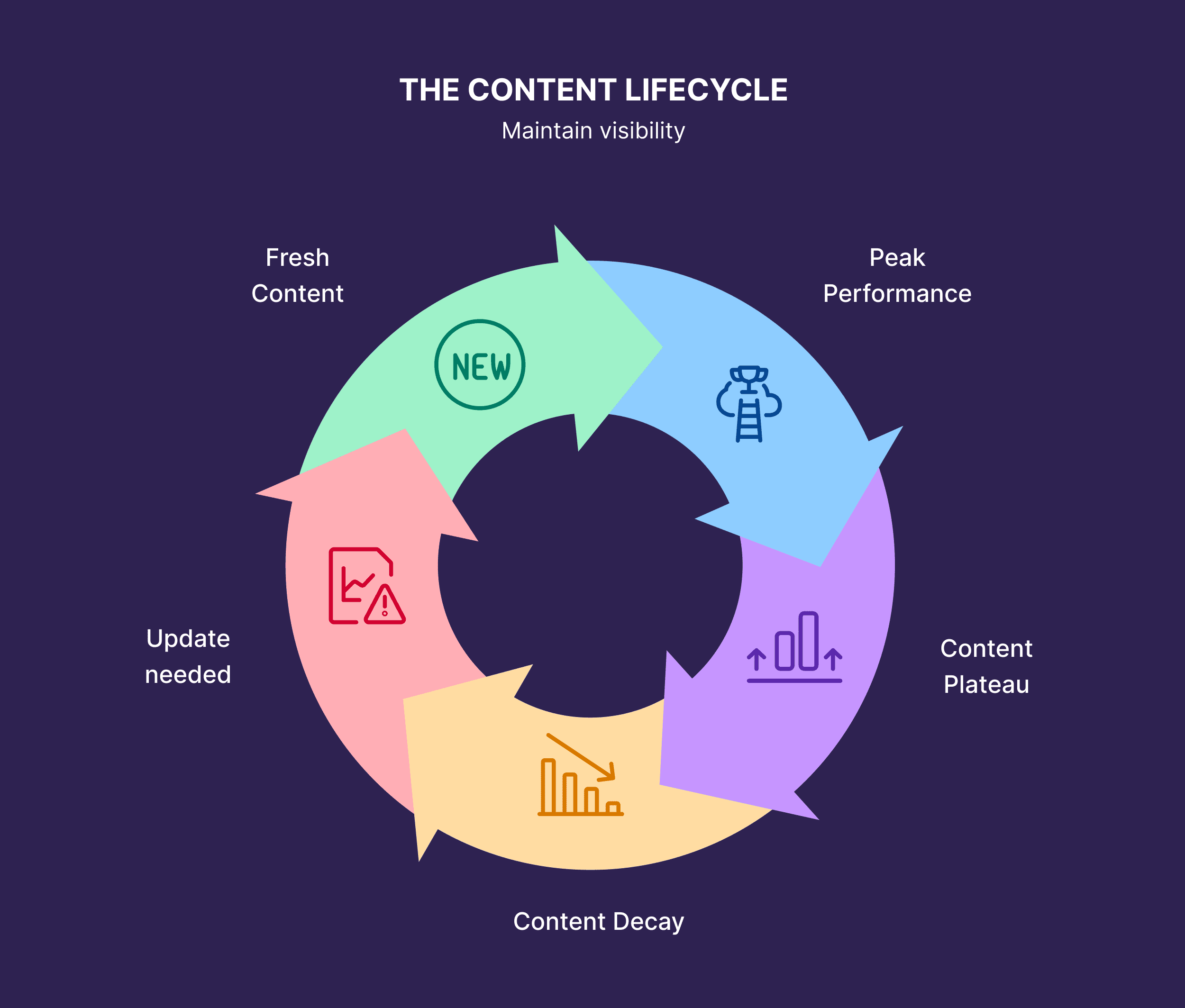
This is especially challenging in marketing and tech, where tools and strategies evolve rapidly.
Without a system in place, staying on top of all your content becomes nearly impossible as your library grows.
The Hierarchy of Updates
We use a three-tier system for content updates:
- Optimizations: Small on-page tweaks like adding internal links, changing an image, tweaking meta tags, or adding CTAs. These are quick wins.
- Upgrades: 15-70% changes to the core content. This includes updating examples, refreshing statistics, adding new sections, or improving visuals.
- Rewrites: More than 70% changes to the core content. These are substantial overhauls that involve rethinking the structure, angle, or approach.
Each scales differently based on time investment and what’s needed. Typically, we do many more optimizations than upgrades, and more upgrades than rewrites.
This approach allows us to prioritize resources effectively. Most pages need regular small optimizations, while only your most critical content typically requires upgrades and rewrites.
Note about video: The same thinking can be applied to video content. While you can’t edit a published video, you can recreate it with no penalty for cannibalization. If you find an angle that’s resonating, recreate it with updated information.
Consolidate Your Content
Sometimes the best update is a strategic merger.
Quick example: for years, WordStream has ranked No. 1 for “keyword research.”
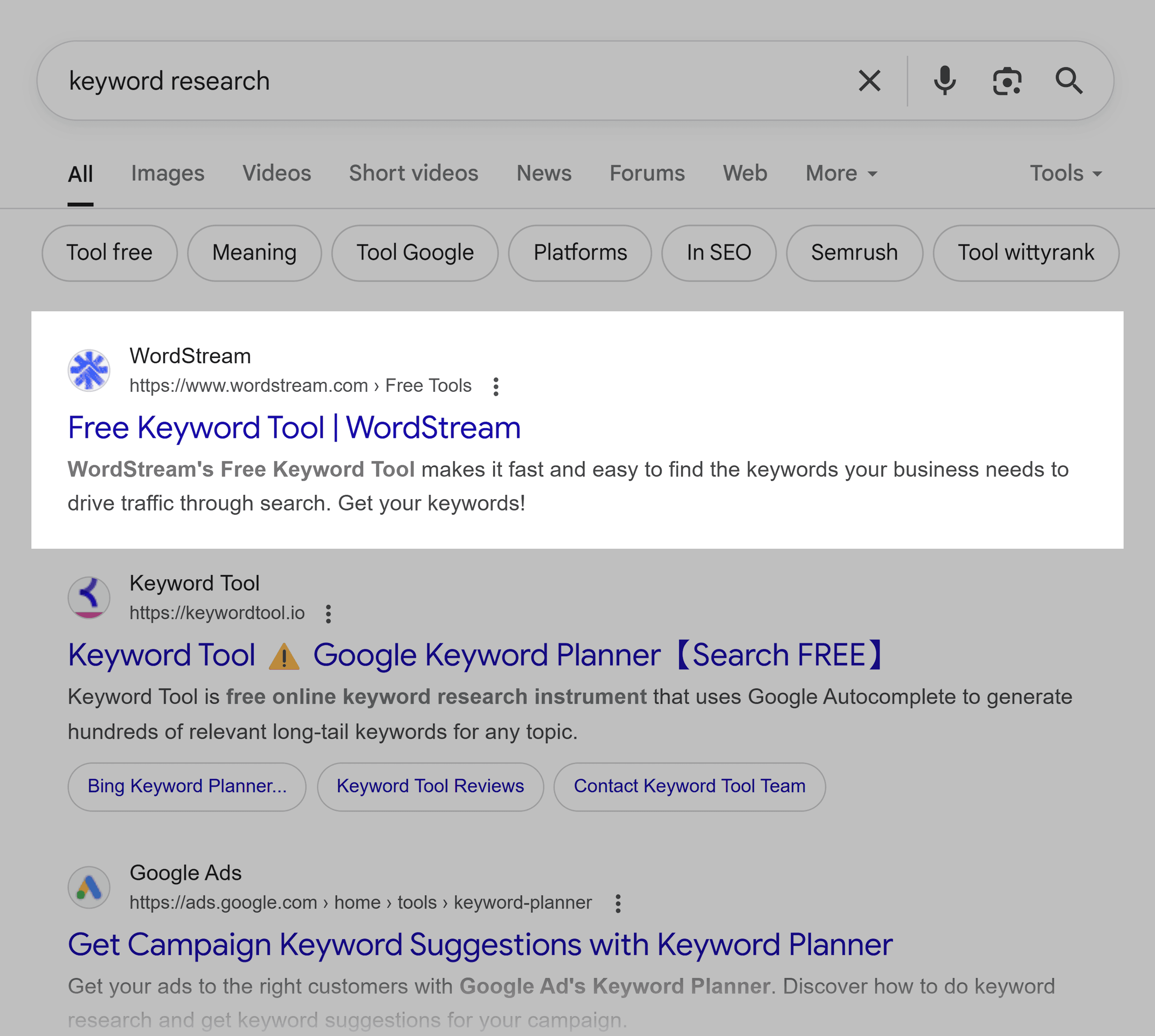
Which sends them over 86.7K monthly organic visits.
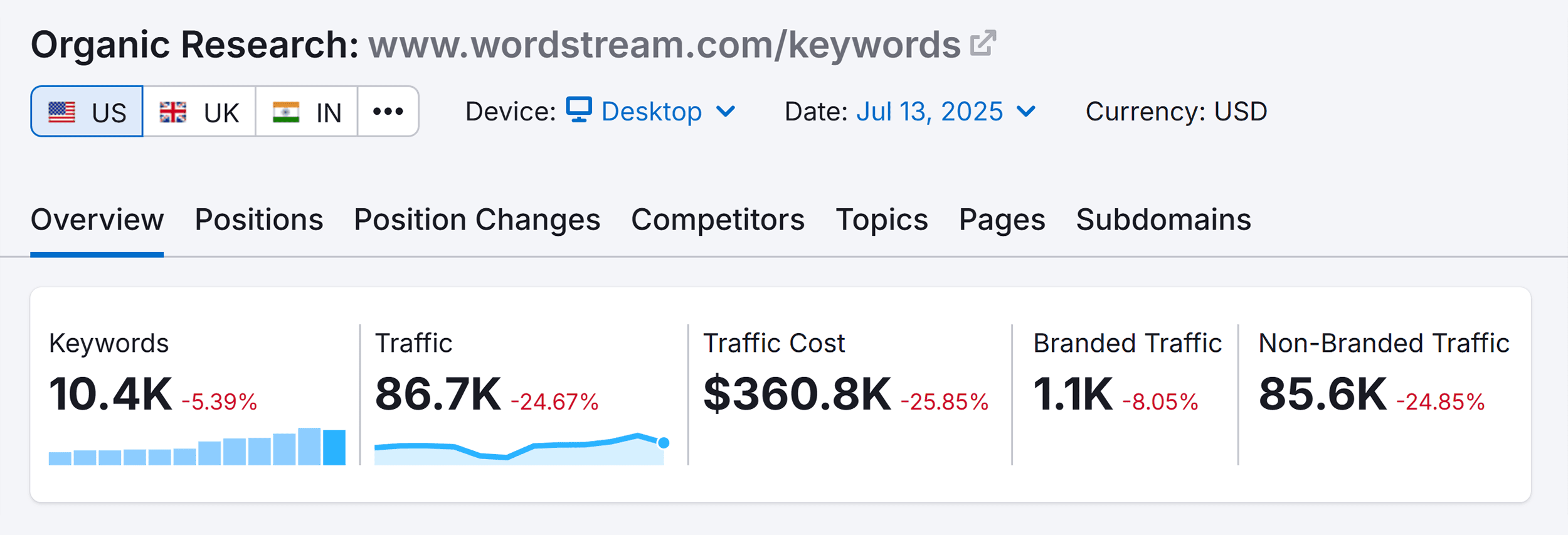
Their page is a free keyword research tool, plus info on how to do keyword research.
I saw an opportunity to consolidate two pages and improve the content:
The goal was to crack the top five for the primary keyword, as this page would then rank for 1000s of related queries.
It worked.
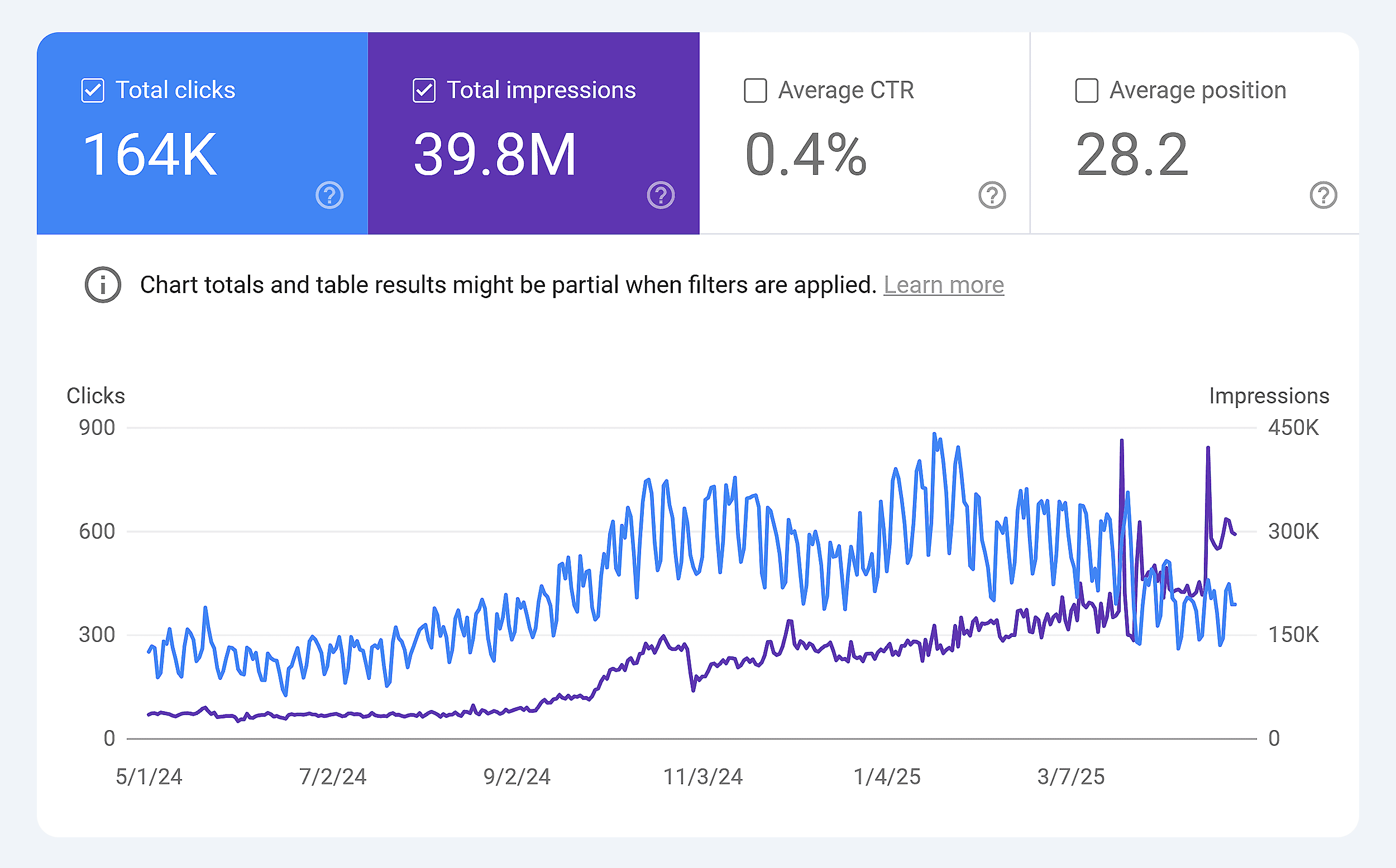
This page has received 164K clicks in the last 12 months — a 626% increase.
This approach doesn’t just refresh the content — it combines the ranking signals of two pages into one stronger asset.
Content consolidation works especially well when:
- You have multiple pages targeting similar keywords
- Some pages are no longer performing well
- You can create a single, more comprehensive resource
- The combined page better serves user intent
What to Look For When Updating
When you’re updating content, think about it like a health check for your article. Is it still accurate? Does it still solve the reader’s problem? Do the examples and visuals look current?
Look for outdated tools, broken links, or advice that no longer works.
Replace old screenshots with current interfaces. And check if any new competitors have published content that covers angles you missed.
This step might be last in my guide, but it’s one of the most important investments you can make in your SEO strategy.
Often, updating what you already have delivers faster results than starting from scratch with new content.
Where to Go From Here
SEO in 2026 isn’t unrecognizable. The fundamentals still matter.
But the bar is higher. The SERPs are more competitive.
And the expectations — from users, from search engines, and from AI systems — have changed.
The strategy outlined in this guide isn’t about reinventing everything. It’s about adapting. Sharpening. Leveling up.
You’re not just chasing rankings anymore. You’re building clarity. Trust. Visibility.
Across channels, across platforms, across conversations.
And yeah — it’s harder now.
But that’s not a bad thing.
It means the people who show up with actual expertise…
Who care about what they’re publishing…
Who are willing to put in the work…
Those are the people who are going to win.
And if we all do that, maybe we don’t just improve rankings.
Maybe we actually make the internet better.
Backlinko is owned by Semrush. We’re still obsessed with bringing you world-class SEO insights, backed by hands-on experience. Unless otherwise noted, this content was written by either an employee or paid contractor of Semrush Inc.



